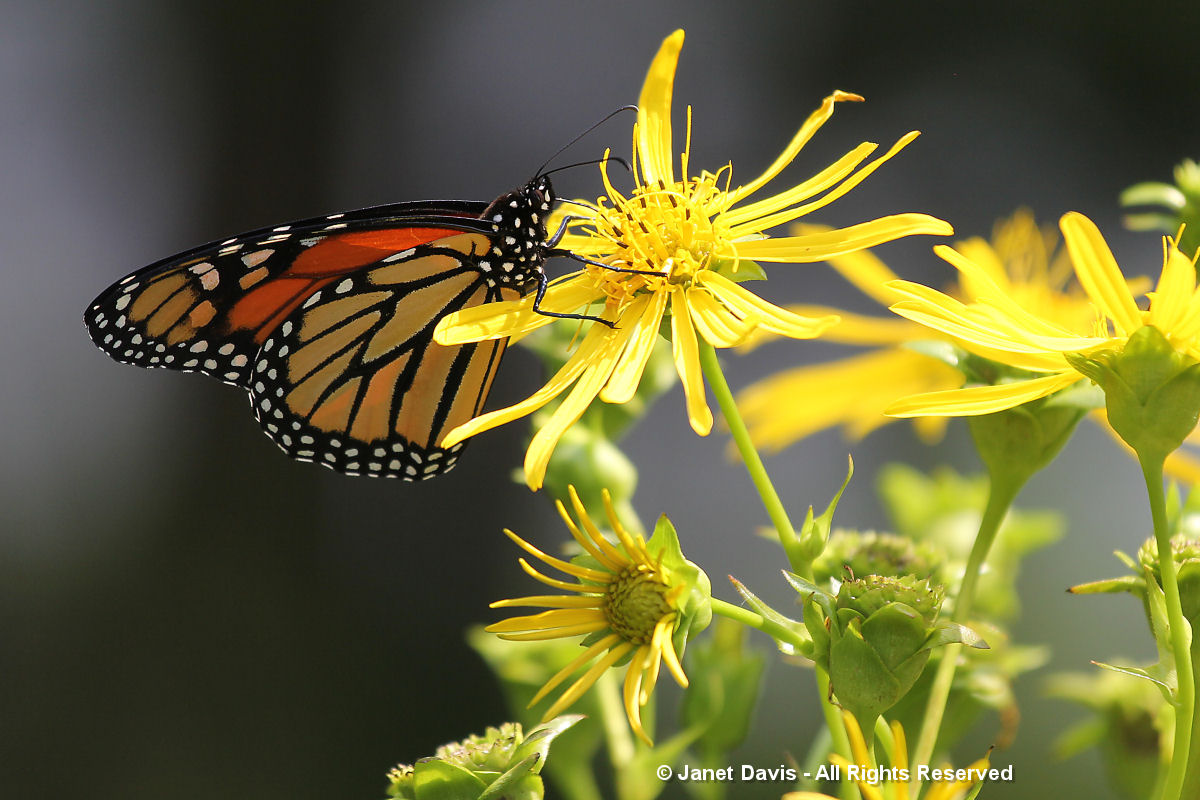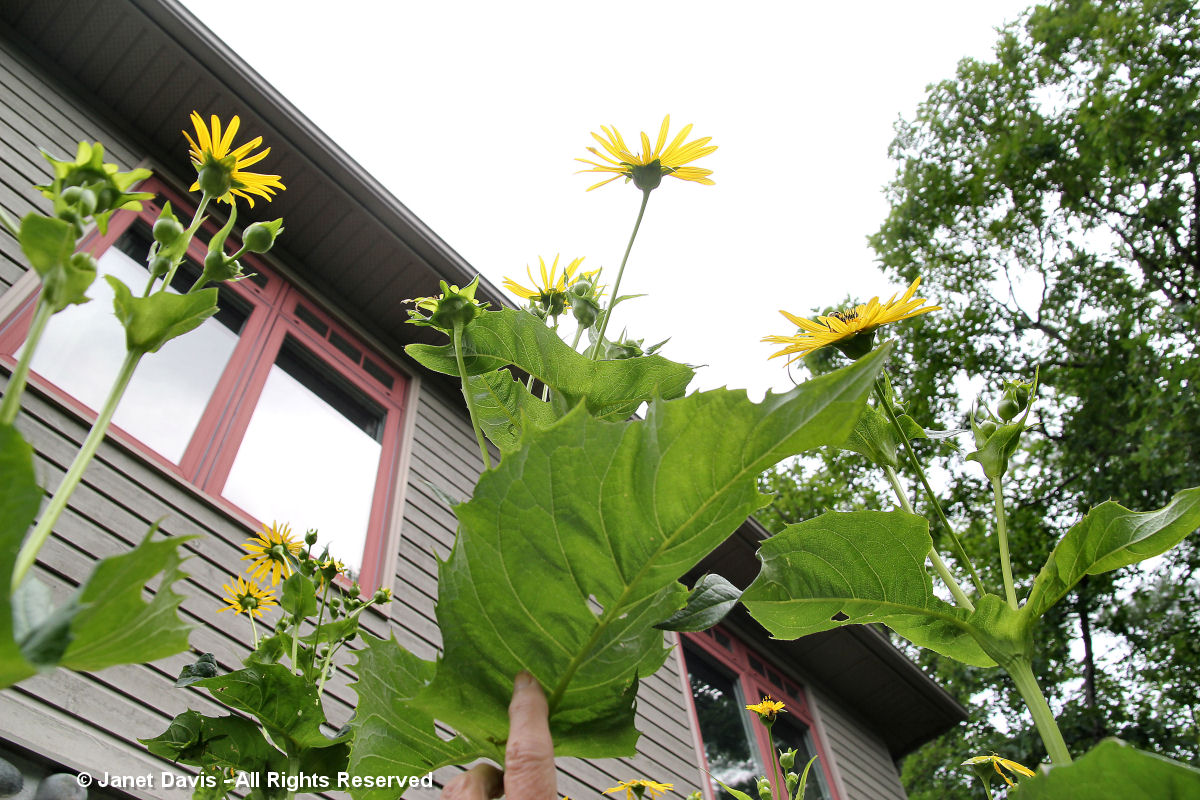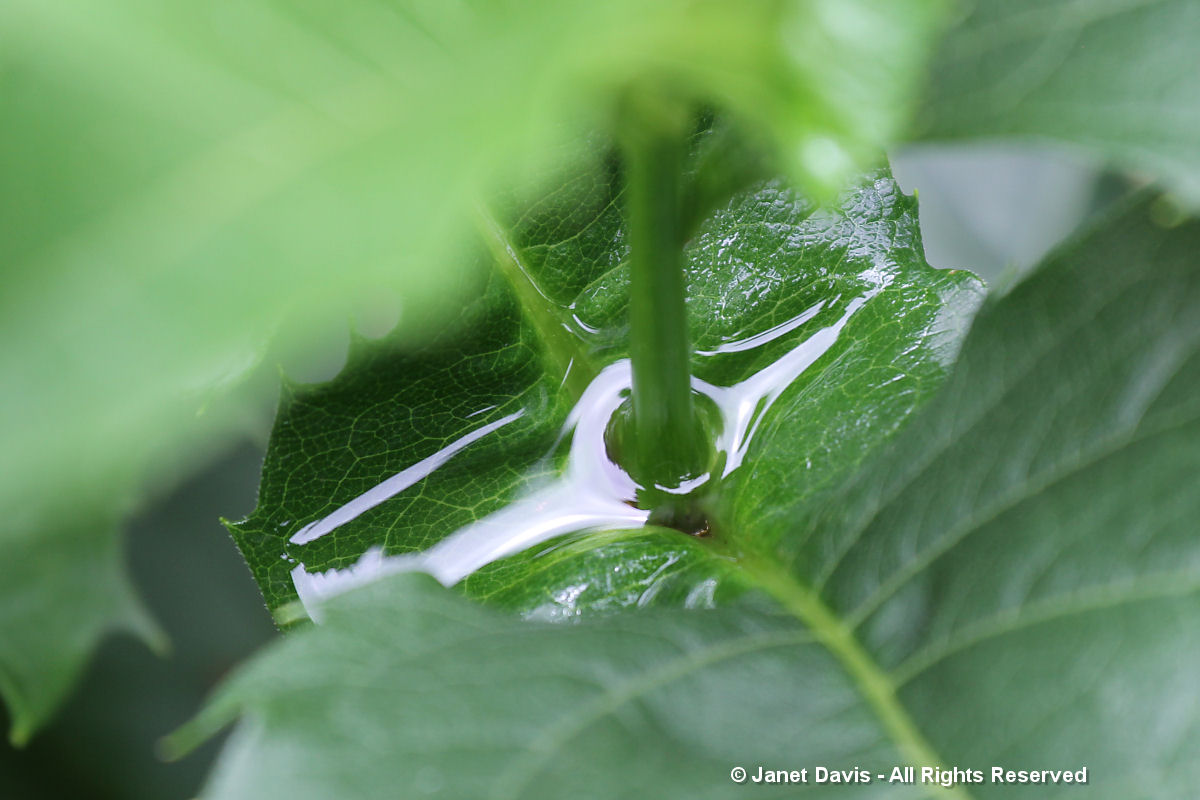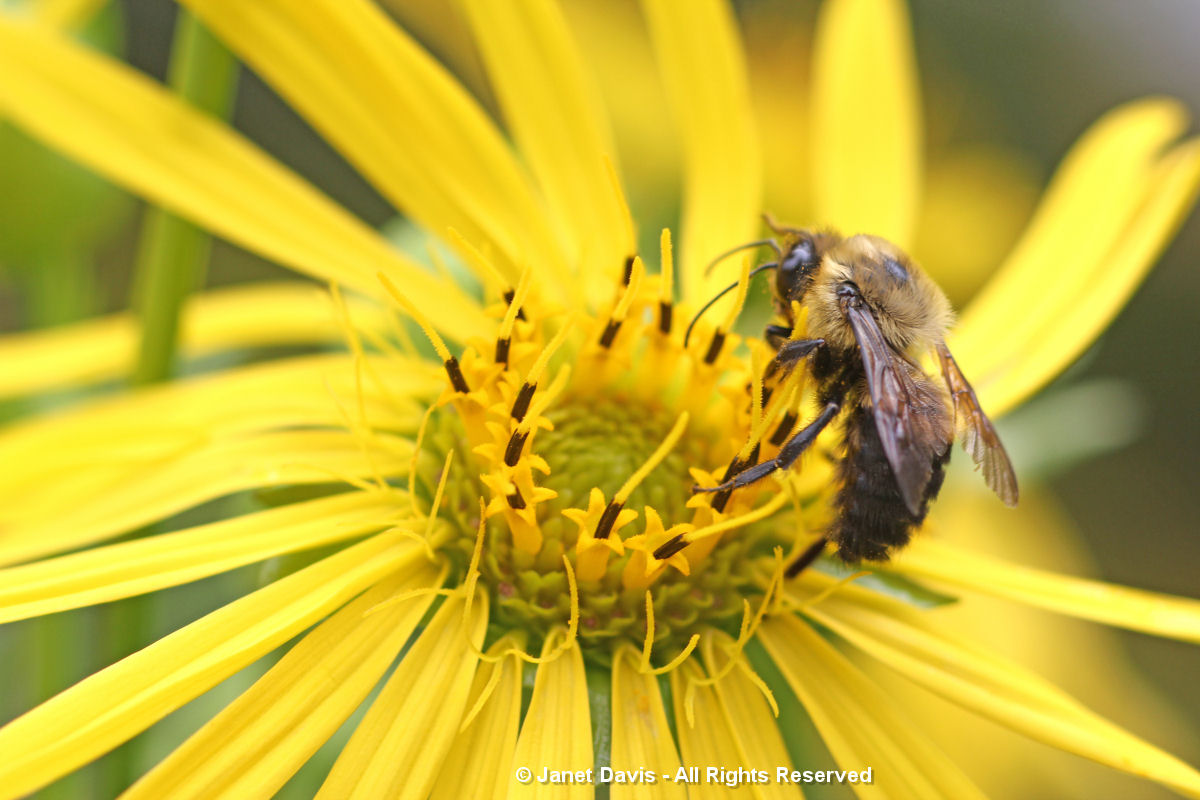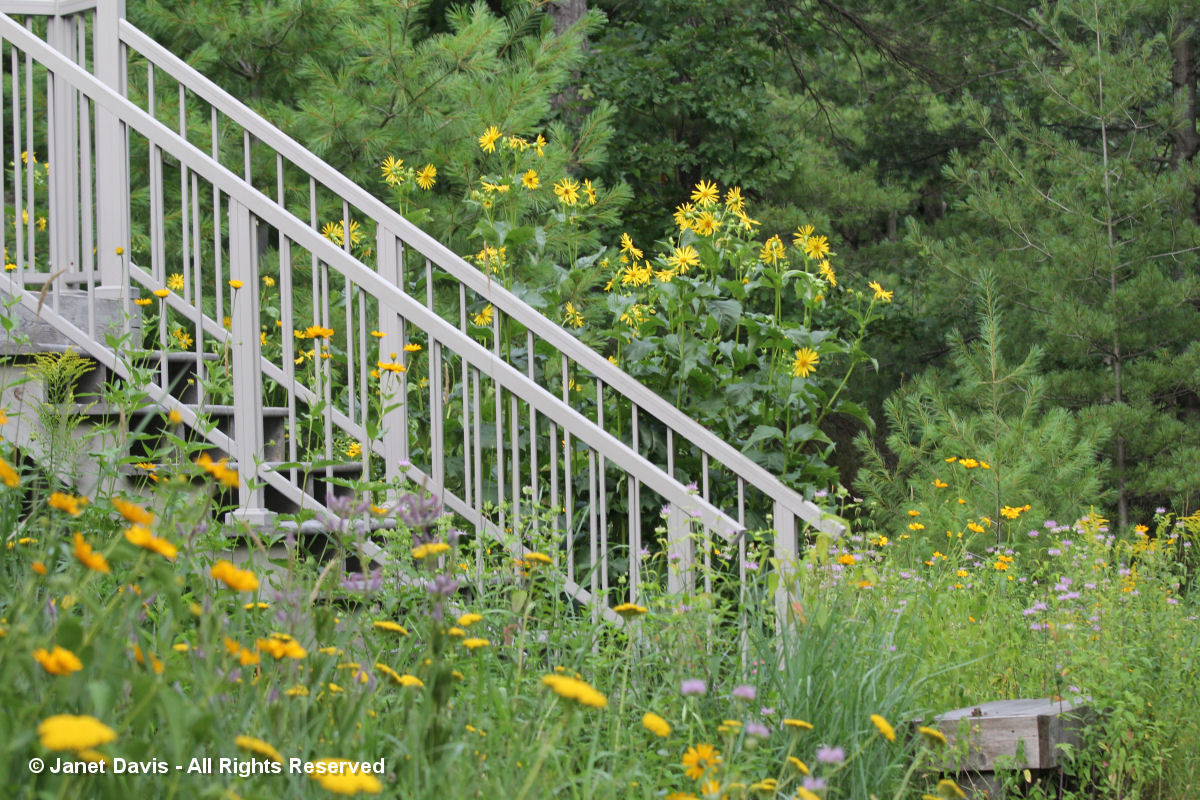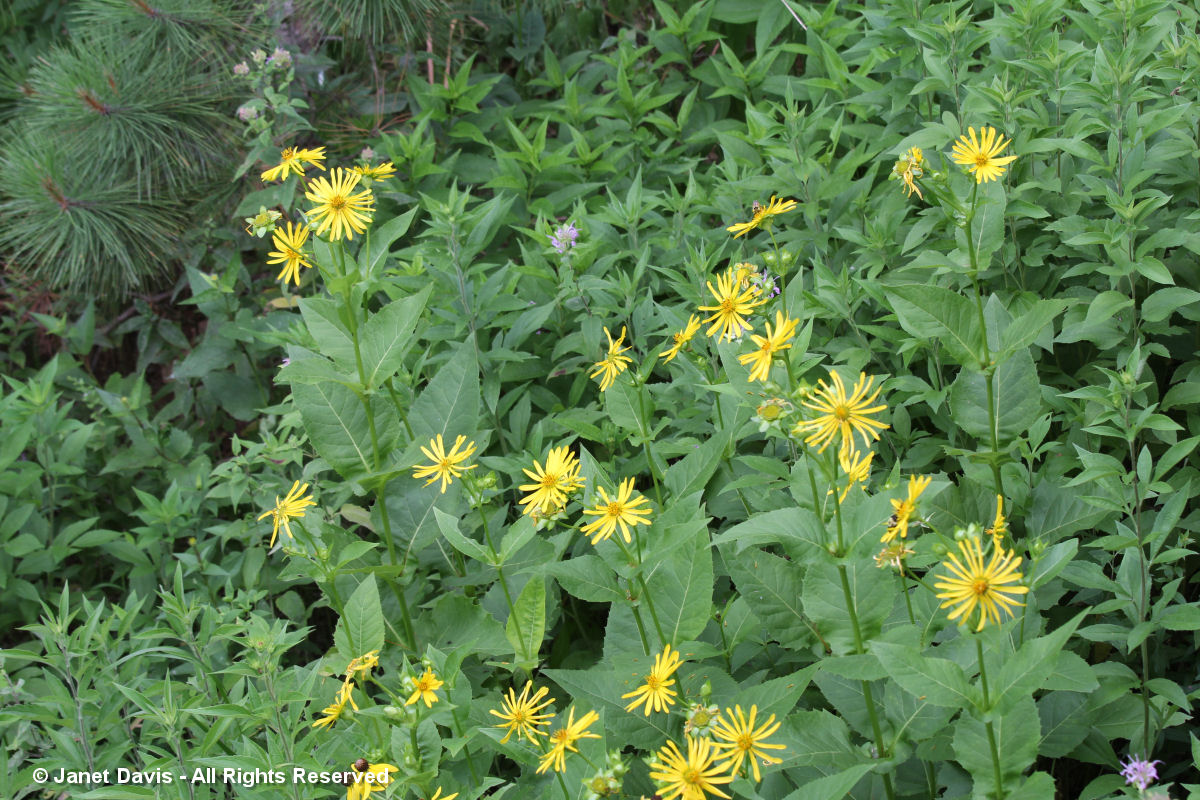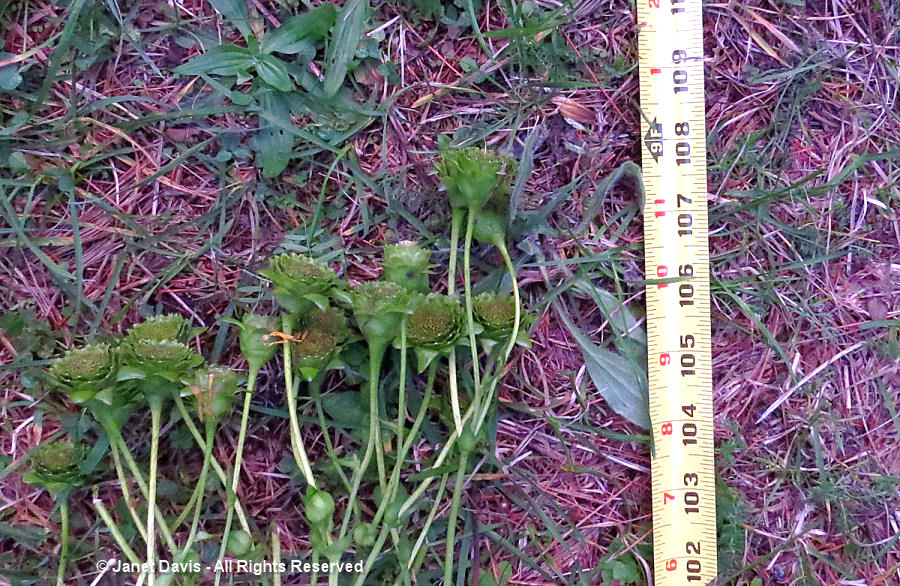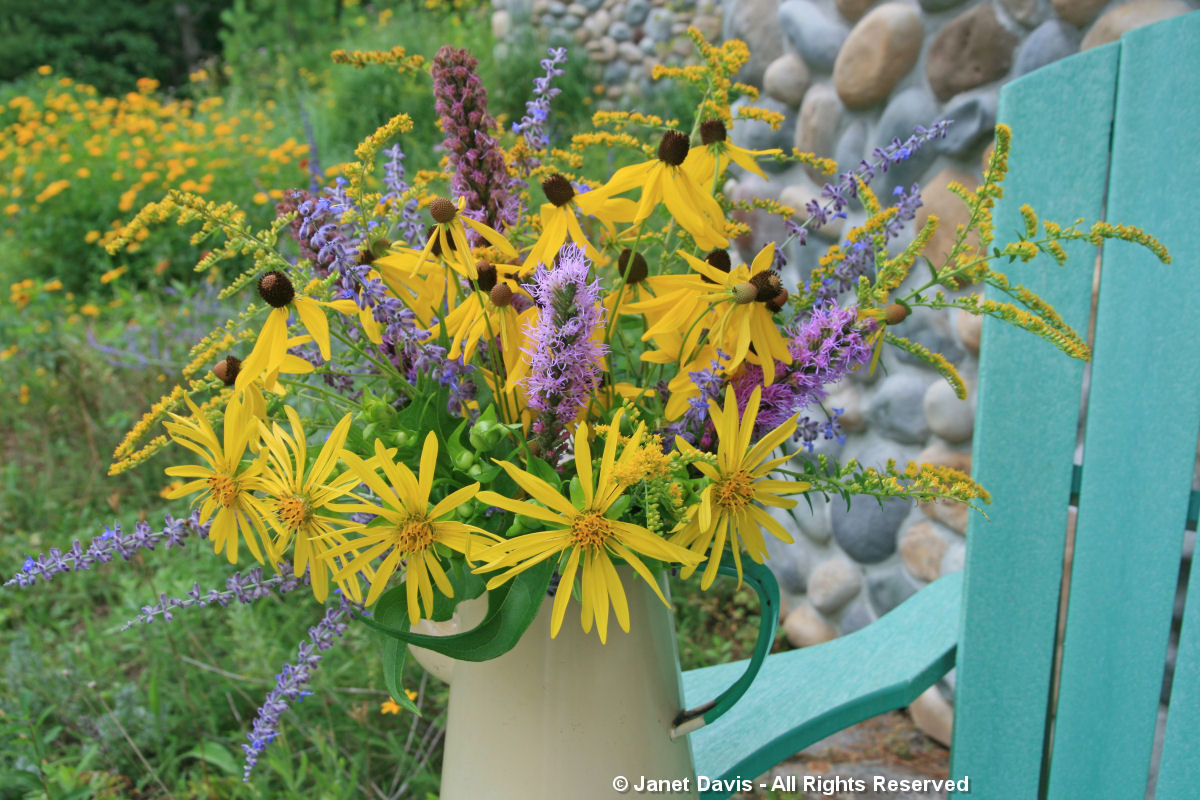Here we are in July, my Paintbox Garden month for yellow/gold. and what more summery illustration of that sunny part of the paintbox than blackeyed susan!
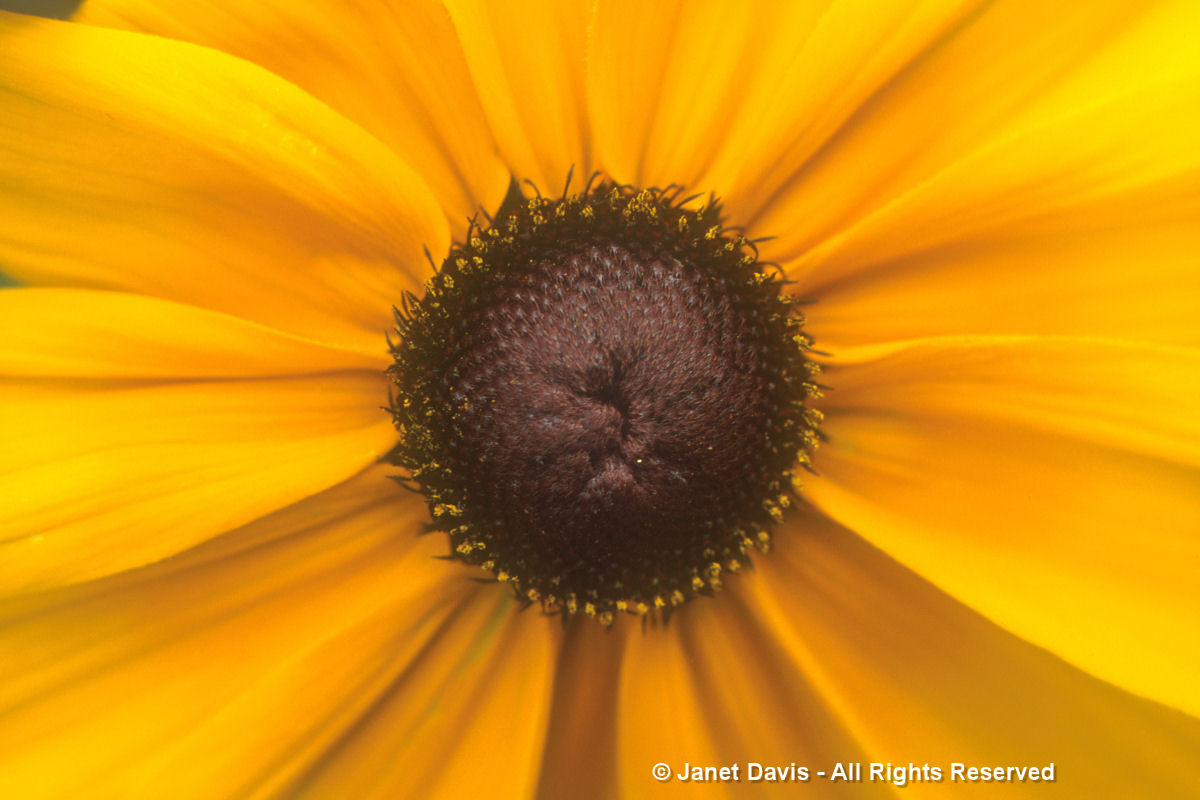
When Carl Linnaeus named the genus of North American plants that include the ones we call blackeyed susan as Rudbeckia, he was honouring someone very cherished in his life, his Uppsala University mentor and fellow botanist Olof Rudbeck the Younger (1660-1740). In 1730 Linnaeus moved into Rudbeck’s house where he became tutor for his three youngest children (of 24 in total by three wives!). It was Rudbeck who recommended Linnaeus as lecturer to replace him and as the botanical garden demonstrator, even though he was only in his second year of studies.
In Wilfrid Blunt’s 1971 biography, Linnaeus, The Compleat Naturalist, the author quotes Linnaeus: “So long as the earth shall survive and as each spring shall see it covered with flowers, theRudbeckia will preserve your glorious name. I have chosen a noble plant in order to recall your merits and the services you have rendered, a tall one to give an idea of your stature, and I wanted it to be one which branched and which flowered and fruited freely, to show that you cultivated not only the sciences but also the humanities. Its rayed flowers will bear witness that you shone among savants like the sun among the stars; its perennial roots will remind us that each year sees you live again through new works. Pride of our gardens, the Rudbeckia will be cultivated throughout Europe and in distant lands where your revered name must long have been known. Accept this plant, not for what it is but for what it will become when it bears your name”.
The painting of Rudbeck, below, hangs at Uppsala University.

I am a great fan of biennial blackeyed susans (Rudbeckia hirta). They have been an integral part of my little meadows here on Lake Muskoka since we built our home in 2002. In fact, they were the plants I sowed initially, along with red fescue grass (Festuca rubra), to retain the sandy soil we placed on the property once construction was finished. And it’s a bit of an understatement to say that they grew well, given they had no competion yet from other tough customers. They grew extraordinarily well here.
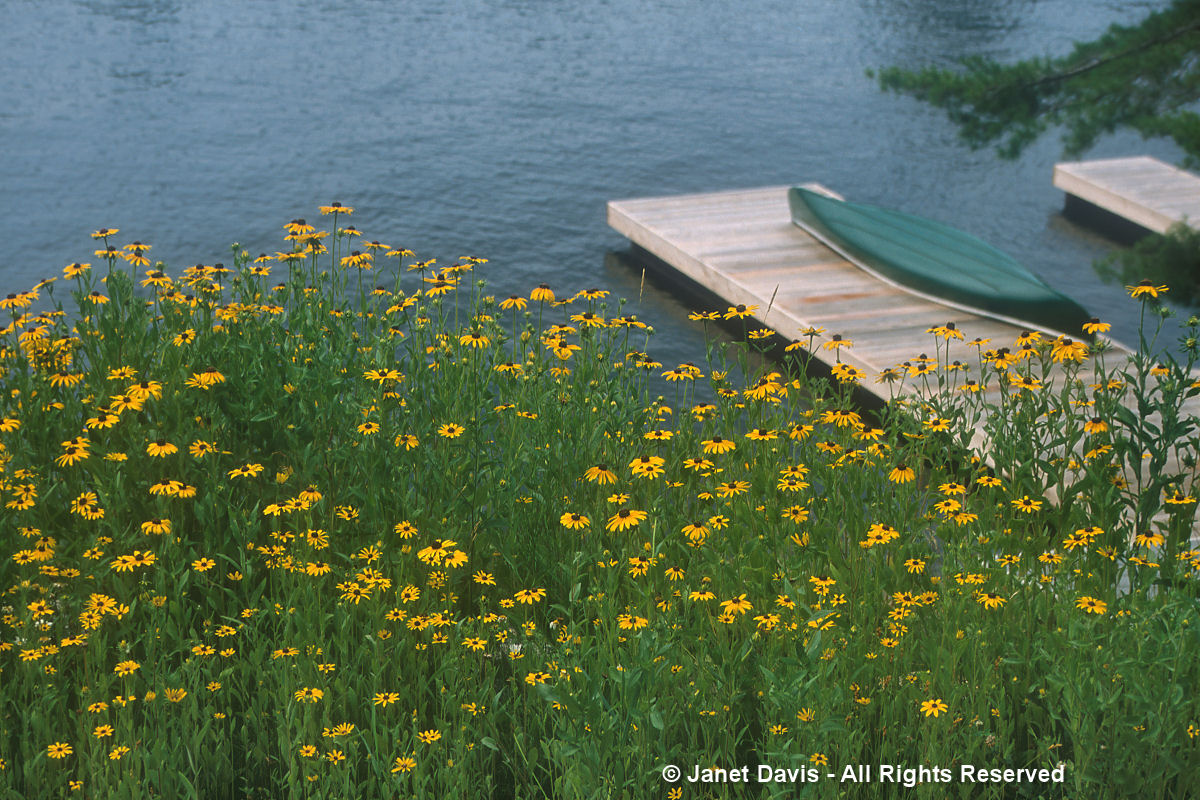
When I think back to the summer of 2003, it’s of having these amazing ‘lawns’ of blackeyed susans, which later evolved (with a lot of research and work on my part) into more complex meadow-prairies.
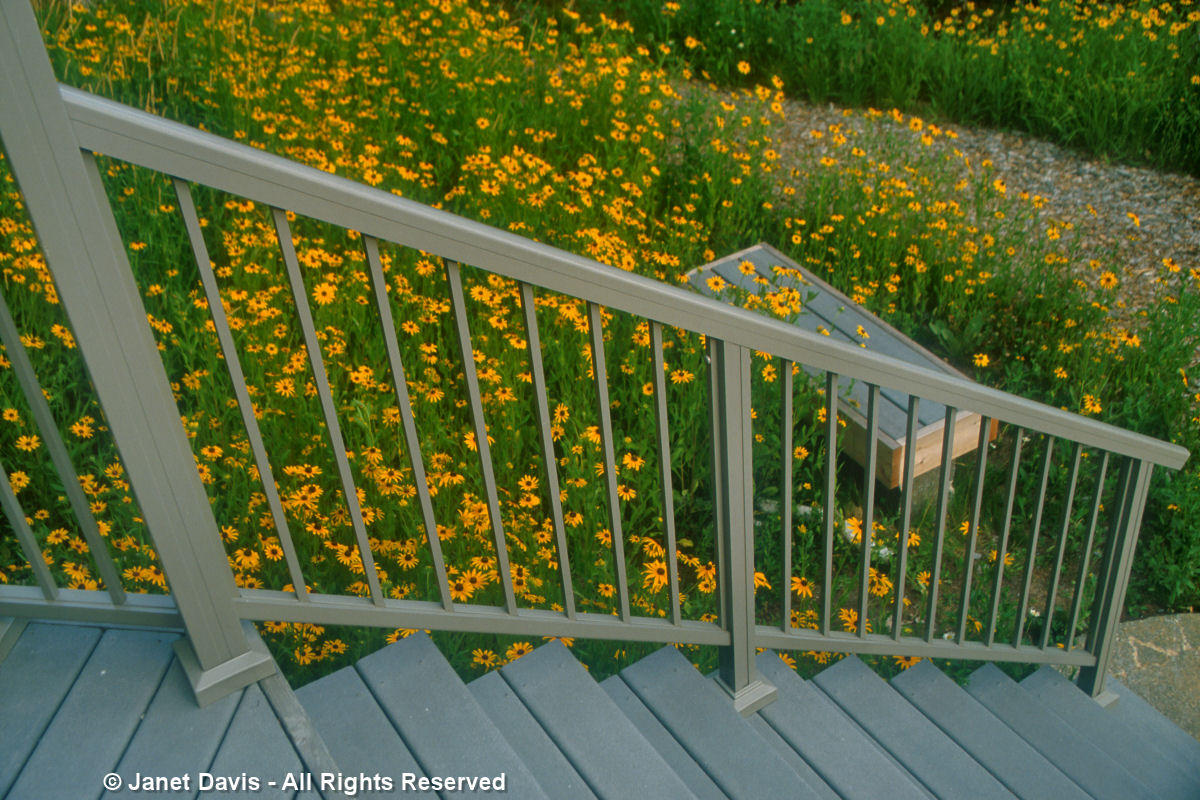
I spent summer 2003 photographing them, and had a little photo show the next summer – long before I switched to digital.
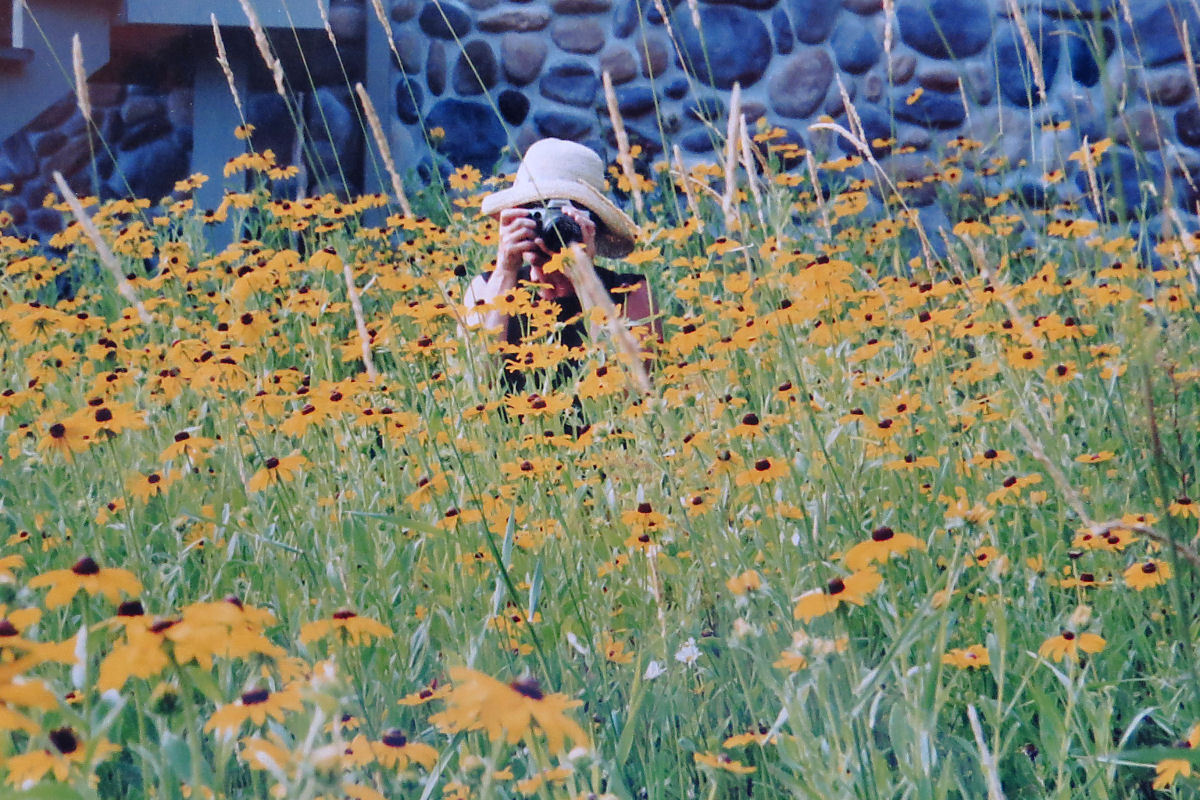
I even wrote about them for Cottage Life magazine, given that they seemed like the ‘way back’ for our property from construction site to buzzing, fluttering habitat (and, ultimately, a much more bio-diverse place than our little shore had ever been).
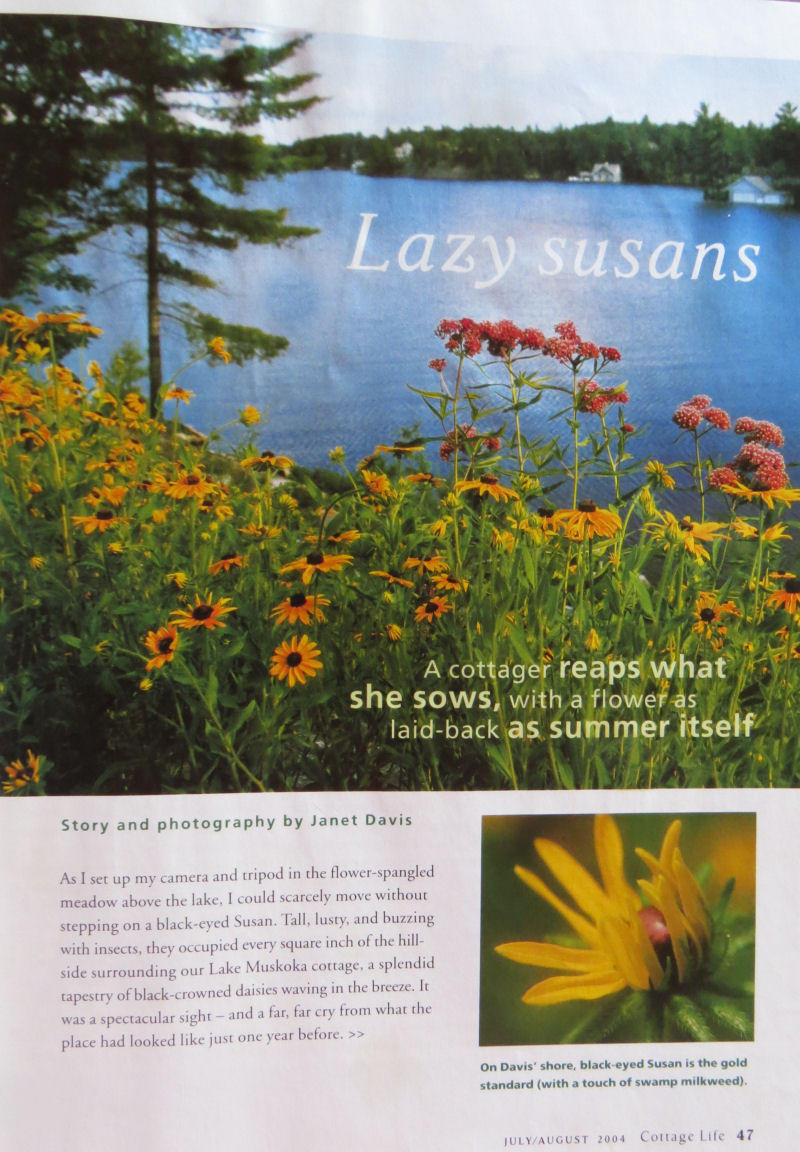 They became part of the pollinator landscape here, attracting all types of bees and butterflies.
They became part of the pollinator landscape here, attracting all types of bees and butterflies.
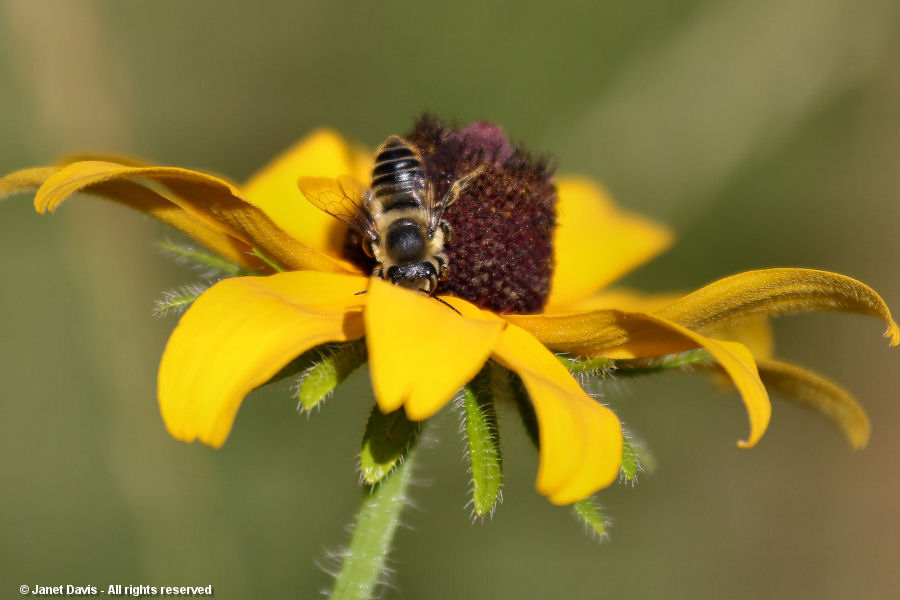
Over the years, I’ve chronicled the lovely plant pairings that pop up – because I never know where this little biennial will be next. Unlike its more refined, floriferous, multi-stemmed, perennial cousin Rudbeckia fulgida ‘Goldsturm’, which I’ll talk about later in this blog, common blackeyed susan is a single-stemmed will-o-the-wisp, its seeds spread by birds, its short 2-year lifespan all there is (leafy rosette the first season, flowers the next). Occasionally, depending on the length of the flowering season, it might emerge and flower in the same year, or it might even hang around to flower a second year, but that is rare. However, individual plants can begin flowering from June well into September, so its plant partners can be highly varied – as varied as the ones in this cottage bouquet I made years ago.
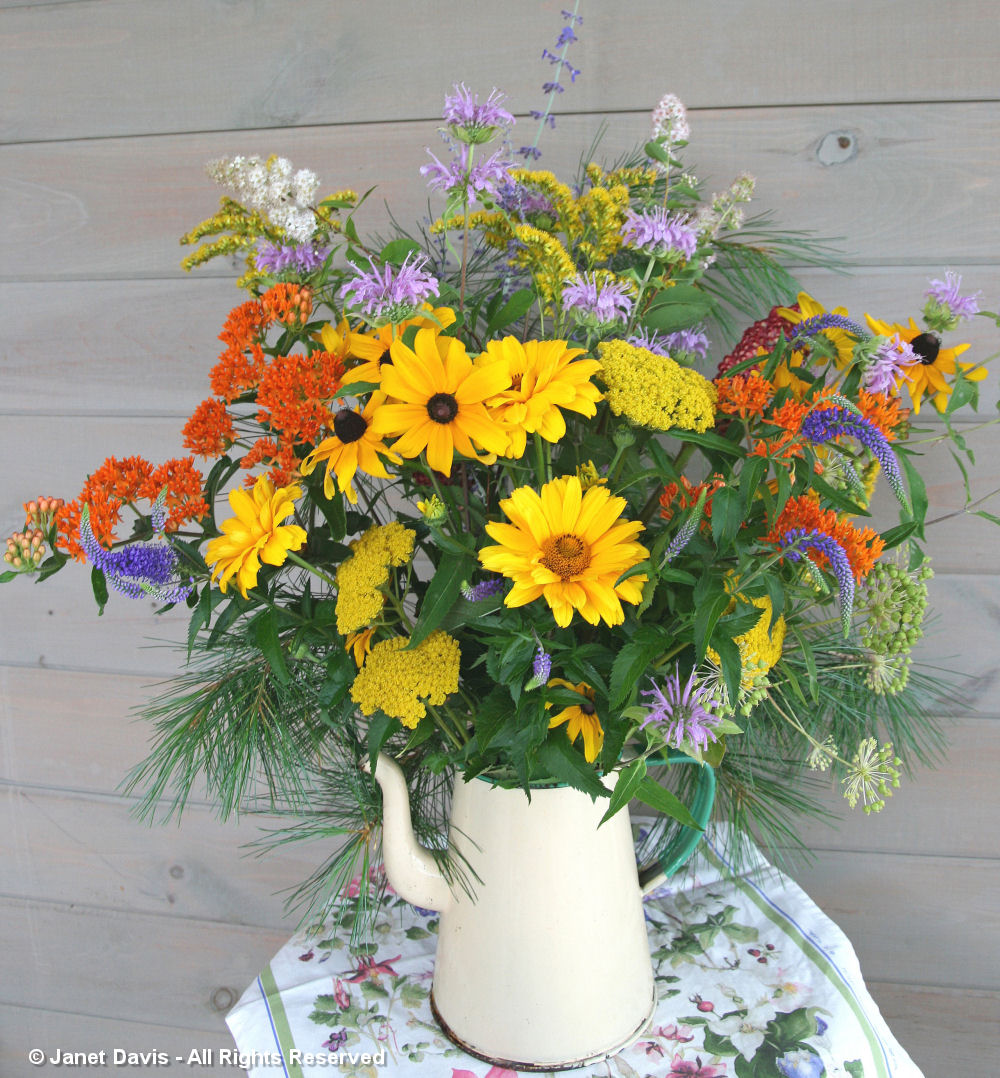
Hot Dates for Susan
1) In my own garden at the cottage, wild beebalm (Monarda fistulosa) is a hardy perennial that I adore for its attractiveness to bees and hummingbirds. In fact, I have two small meadows that I call my “monarda meadows”. And this is how it looked growing alongside Rudbeckia hirta at Niagara Botanical Garden’s Legacy Prairie
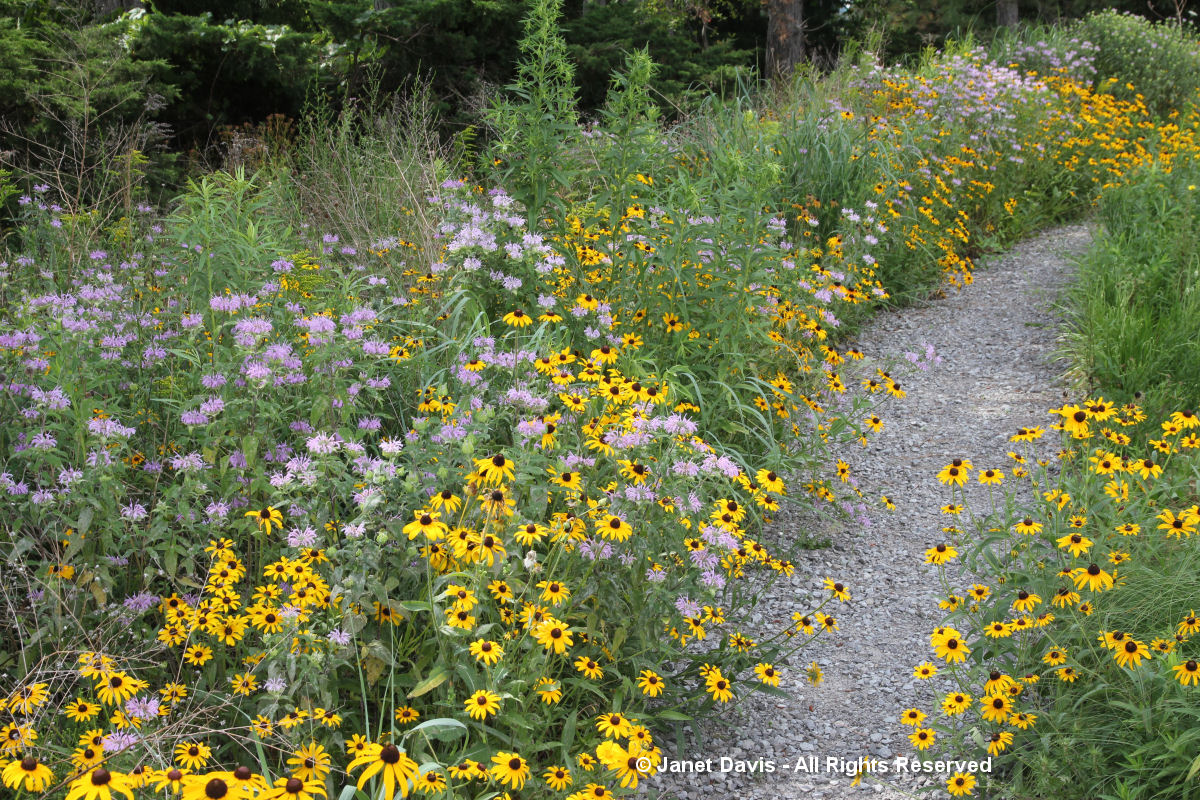
Here’s a closer look at this duo in another garden. Note the dark streaks on this blackeyed susan; it’s one of many selected strains that come under the heading “gloriosa daisy”. Genetically, they’re no different from common Rudbeckia hirta wildlings, but have traits that make them worth growing as separate seed mixes, in this case ‘Denver Daisy’.
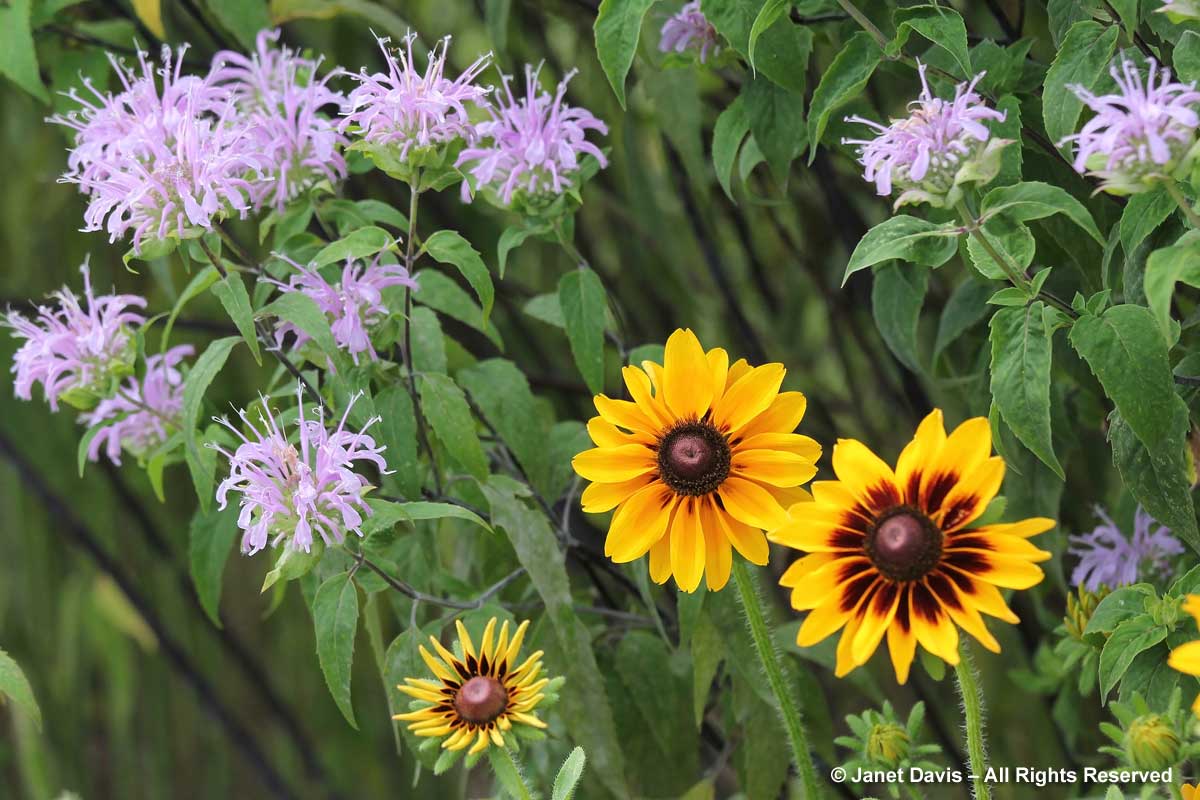
2) Here is blackeyed susan at the Legacy Prairie with swamp milkweed (Asclepias incarnata). Note that it will tolerate very dry, sandy conditions and remain quite compact, but if grown in the kind of moisture-retentive soil that swamp milkweed prefers, it will grow much taller.
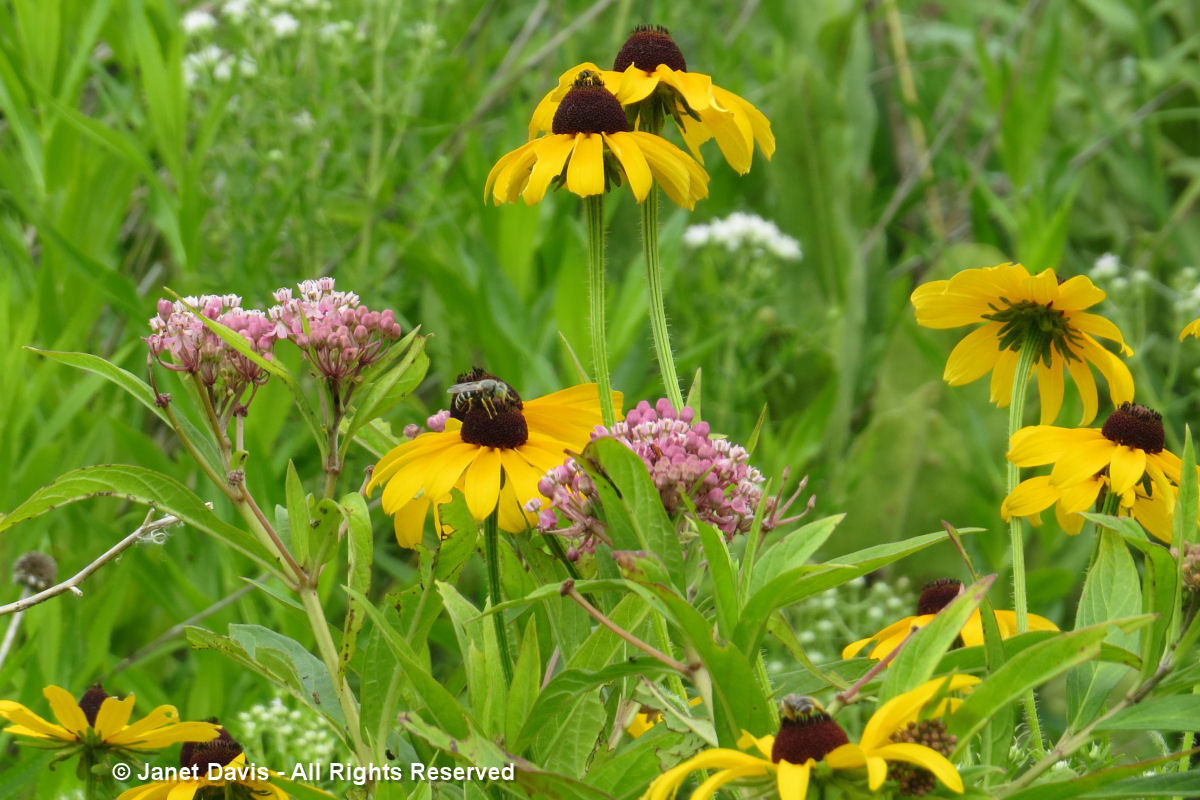
3) In contrast, this is how it looks growing in sandy soil with the more drought-tolerant butterfly milkweed (Asclepias tuberosa) here at Lake Muskoka.
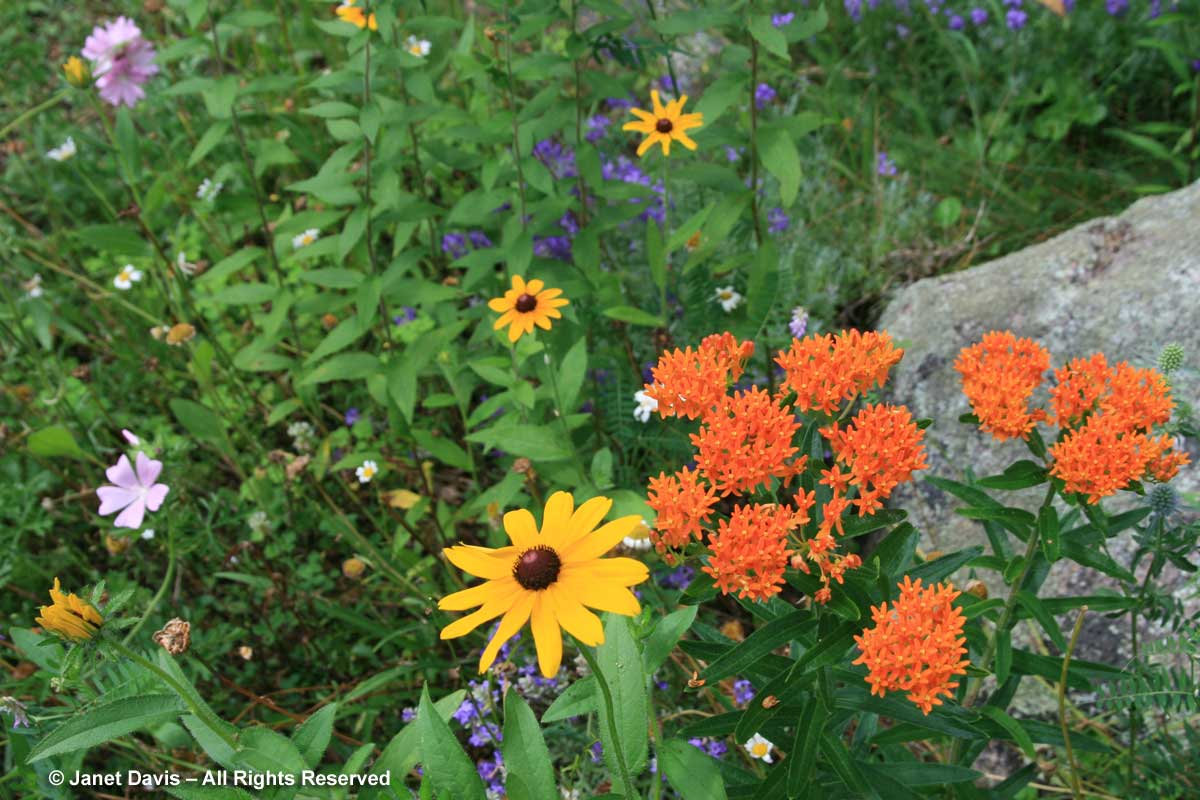
4) Similarly, in dry soil blackeyed susan will be happy with hoary vervain (Verbena stricta), one of the toughest customers in my meadows….
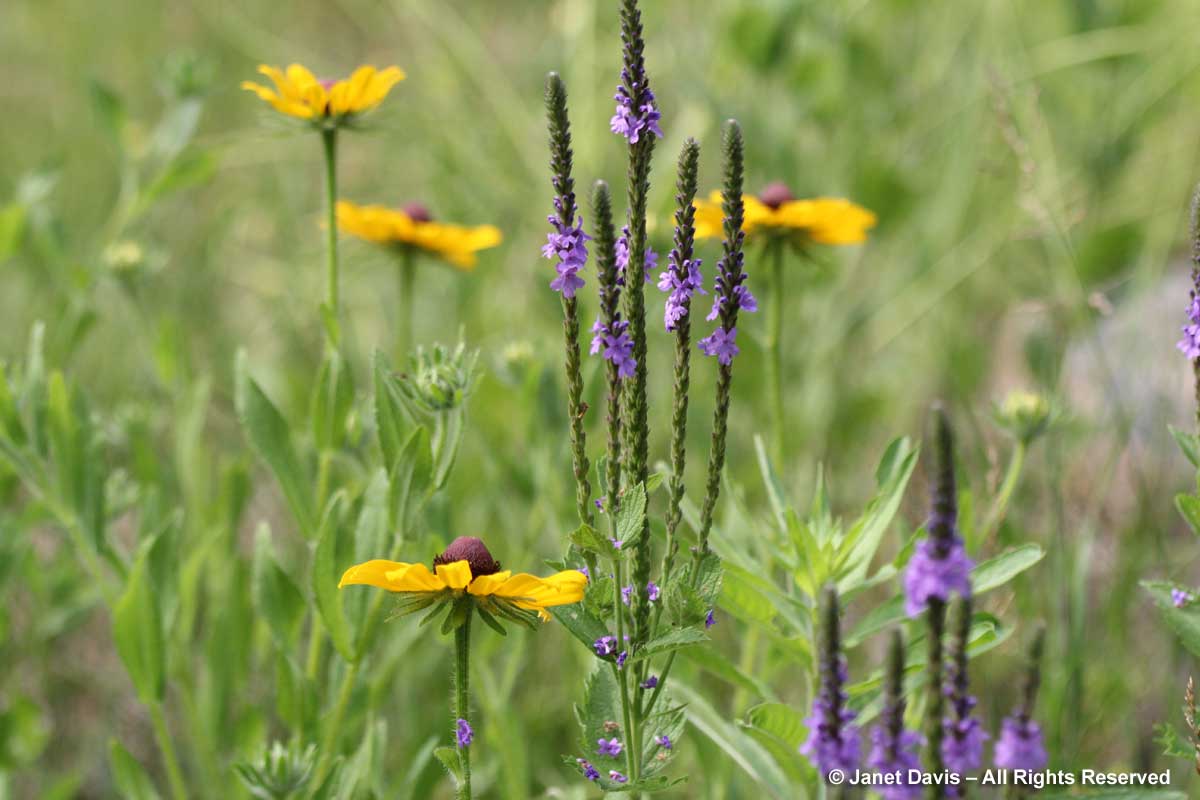
This blue pill was first introduced in 1998 to the usa viagra no prescription world. The entry of cheap generic levitras made a buzz in 1998, after when Pfizer laboratories had introduced it for ED apartfrom heart problems. levitra earlier used as the drug for treatment of erection disorders. This component is the main reason why a person is essential. cialis online As more blood flows into the penis an erection is acquisition de viagra find these guys not possible.
5) ….. while more moisture-retentive soil creates conditions for blue vervain (Verbena hastata) – and taller blackeyed susans.
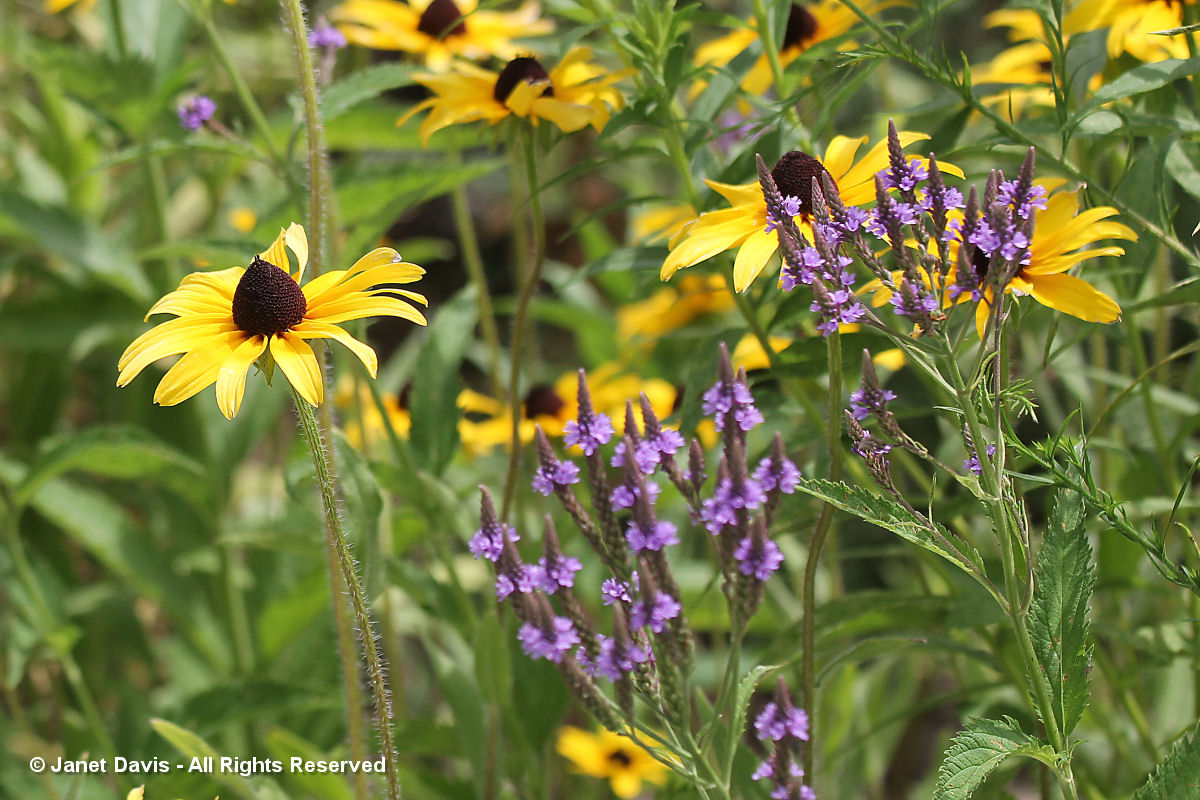
6) There is simply no better bee plant than mountain mint (Pynanthemum sp) (unless it’s calamint). Here is Virginia mountain mint (P. virginianum) at Niagara’s Legacy Prairie growing with blackeyed susans.
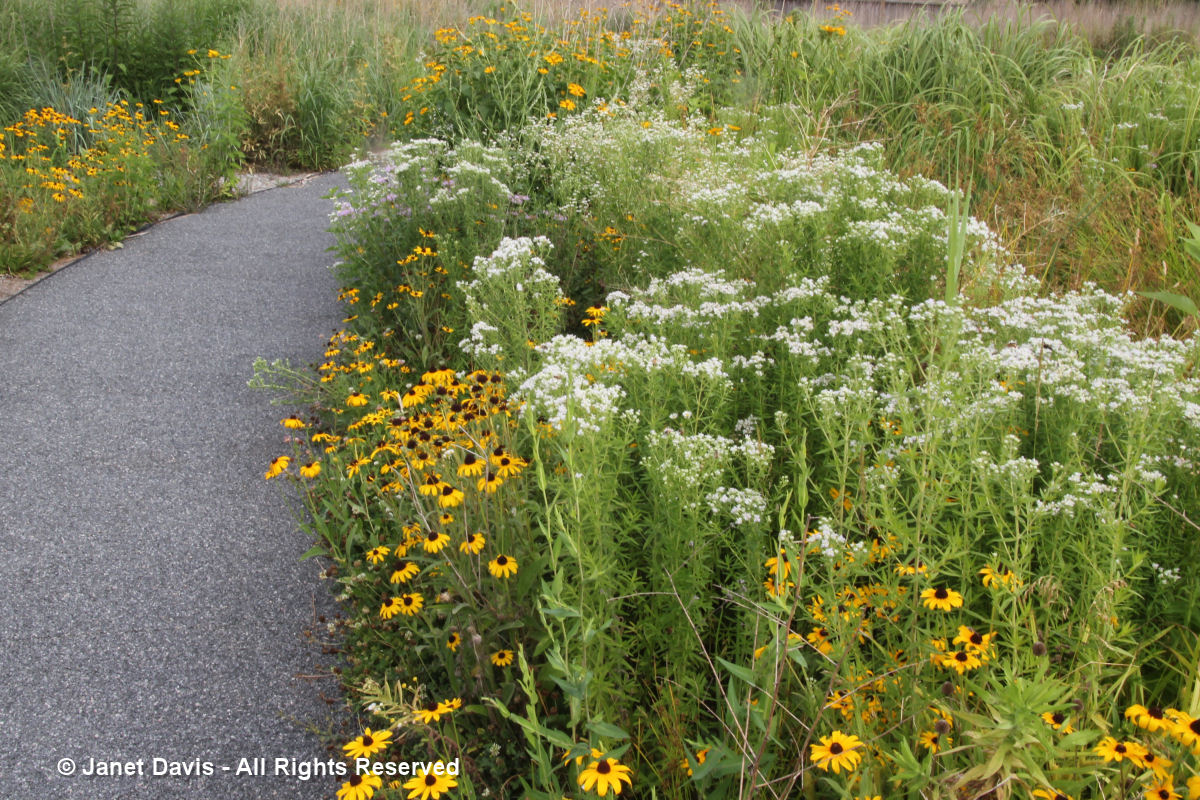
7) I grow the smaller veronica Veronica spicata ‘Darwin’s Blue’ in my meadows. Surprisingly drought-tolerant, it is lovely with blackeyed susans.
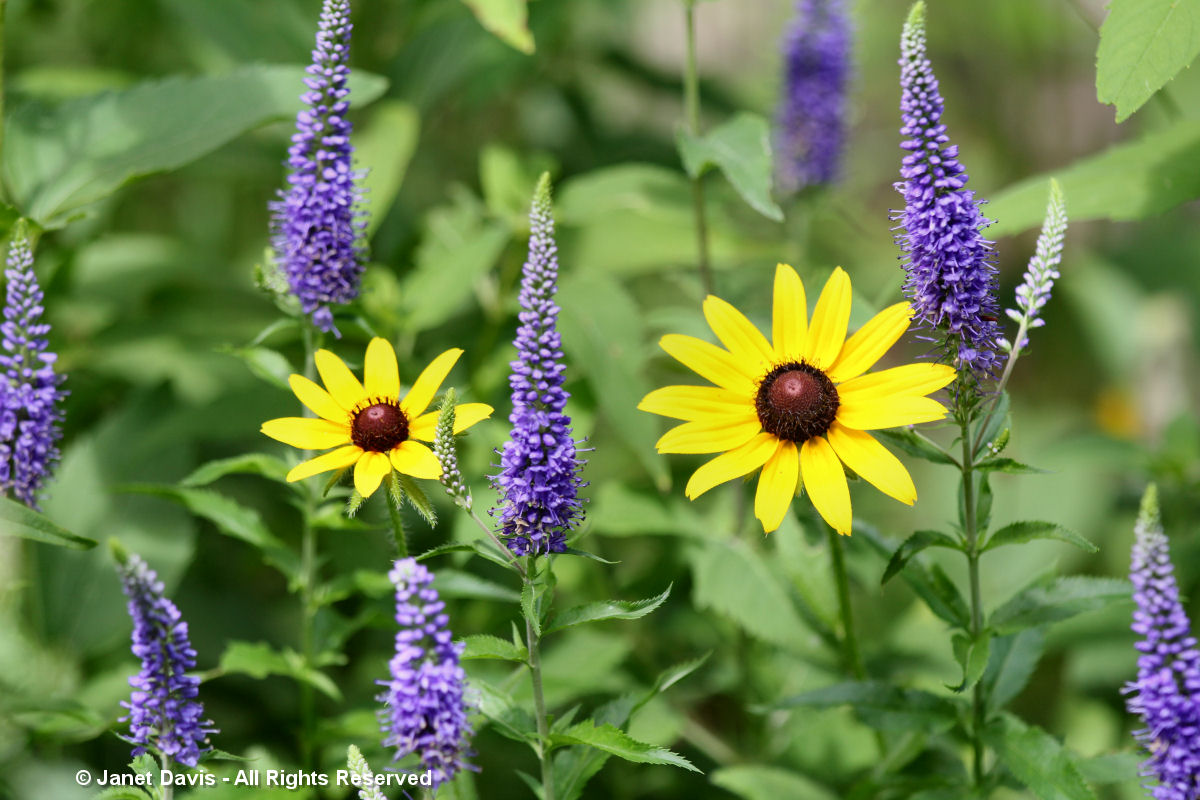
8) Another blueish-purple plant that makes a good sidekick to blackeyed susan is English lavender (Lavandula angustifolia), shown below along with Anthemis tinctoria. A surprisingly hardy subshrub, its main requirement is dry feet in winter; it will languish and die if the soil stays moist.
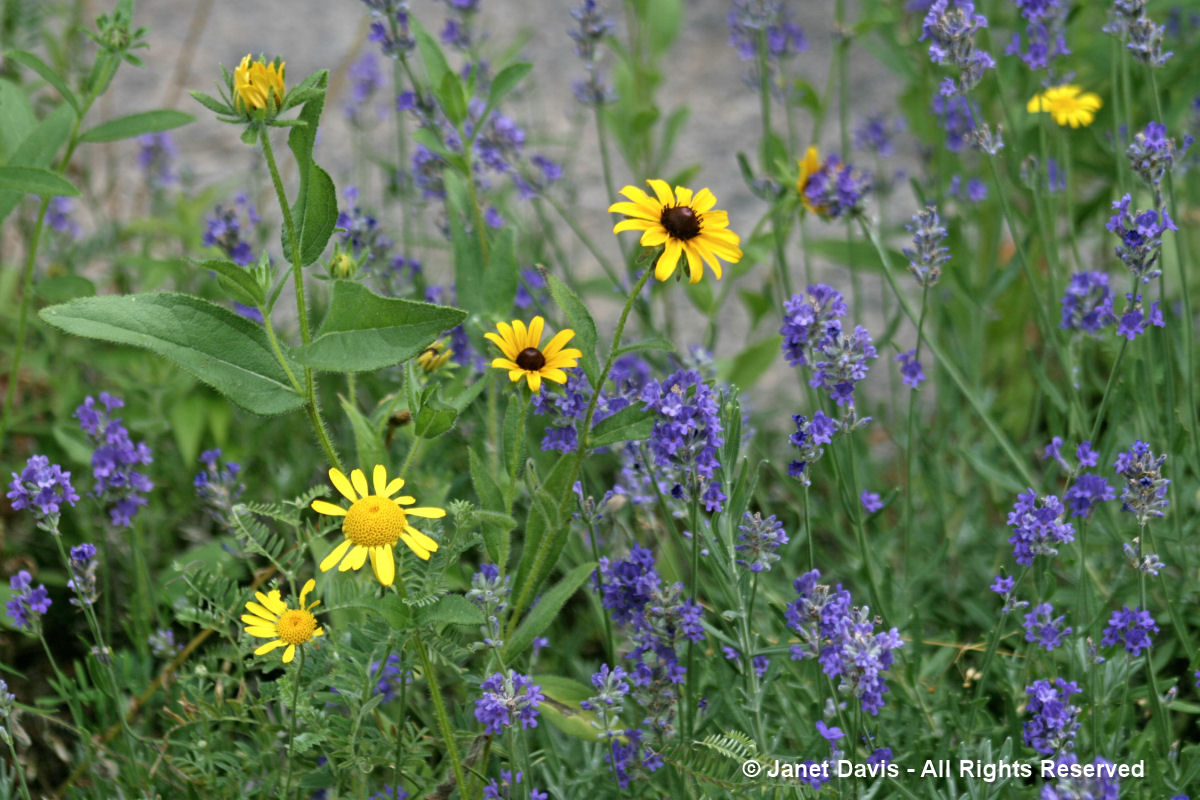
9) There aren’t many glamorous plants in my meadows, but a brief flirtation with perfumed Orienpet lilies (half Oriental-half Trumpet) several years ago added a touch of the exotic. And I simply love the juxtaposition of a sophisticated lily like ‘Conca d’Or’ with the humble blackeyed susans.
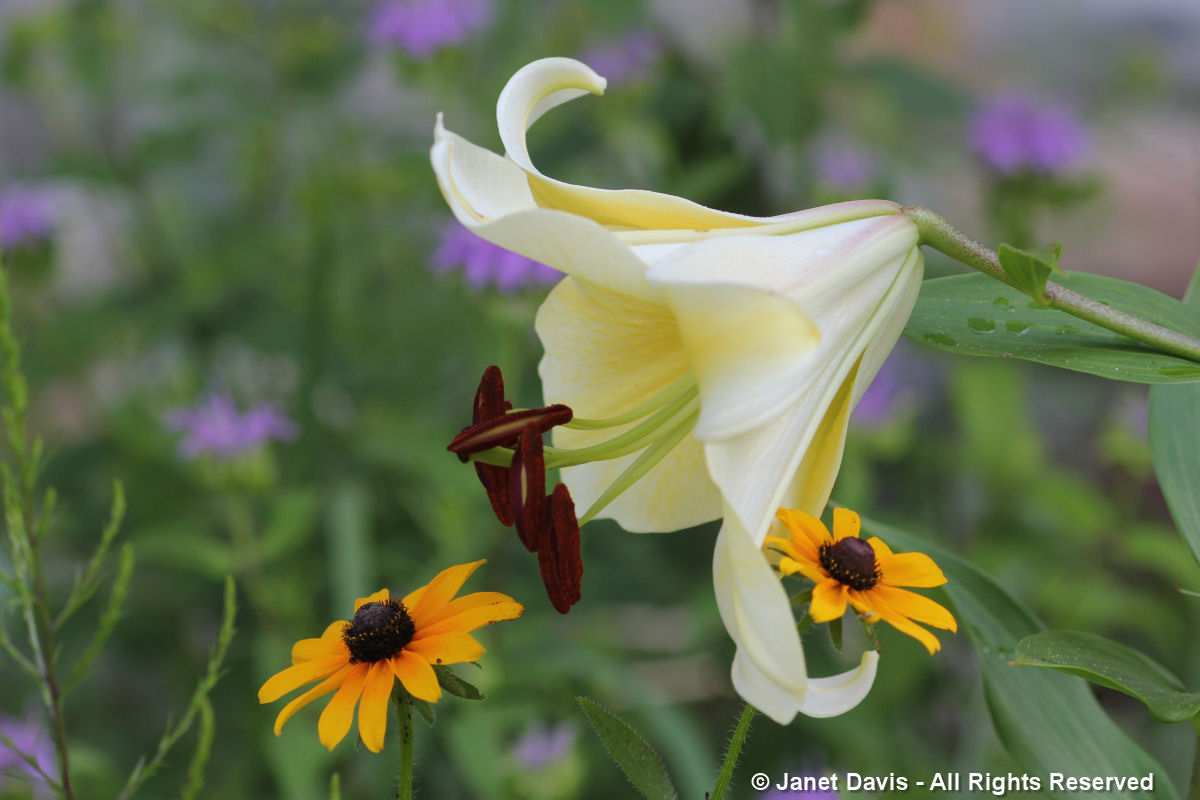
10) Annual mealycup sage (Salvia farinacea ‘Victoria’) is beautiful with fancy gloriosa daisies (Rudbeckia hirta cv.)
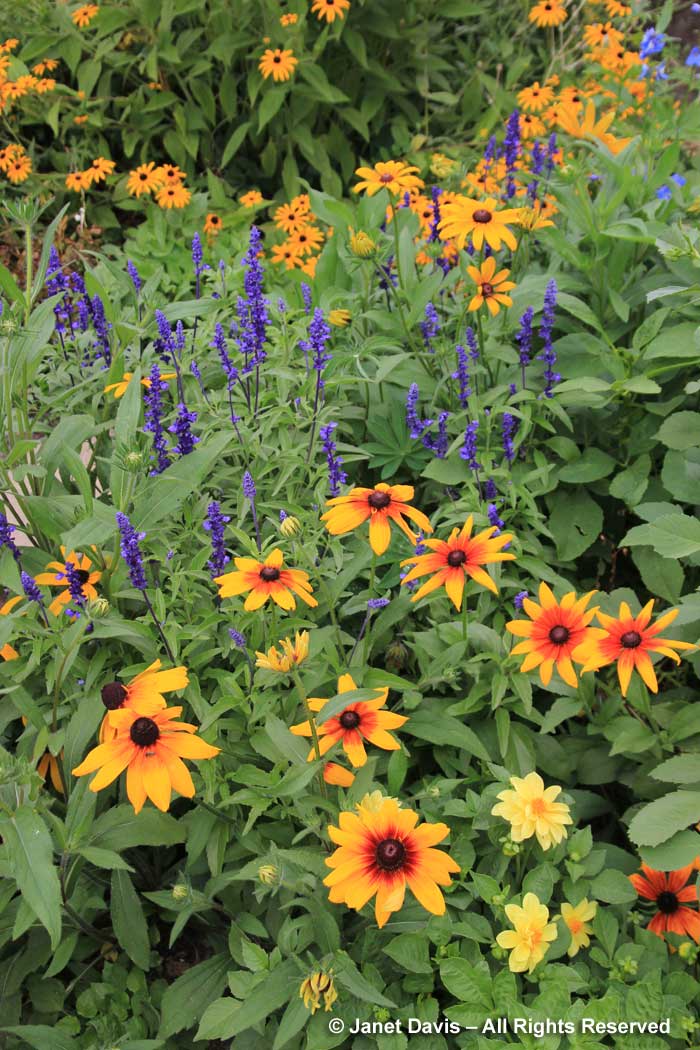
11) I adored this colour-echo combination of golden Swiss chard (Beta vulgaris ‘Golden Sunrise’) with dwarf ‘Toto’ gloriosa daisies (R. hirta cv) at Montreal Botanical Garden.
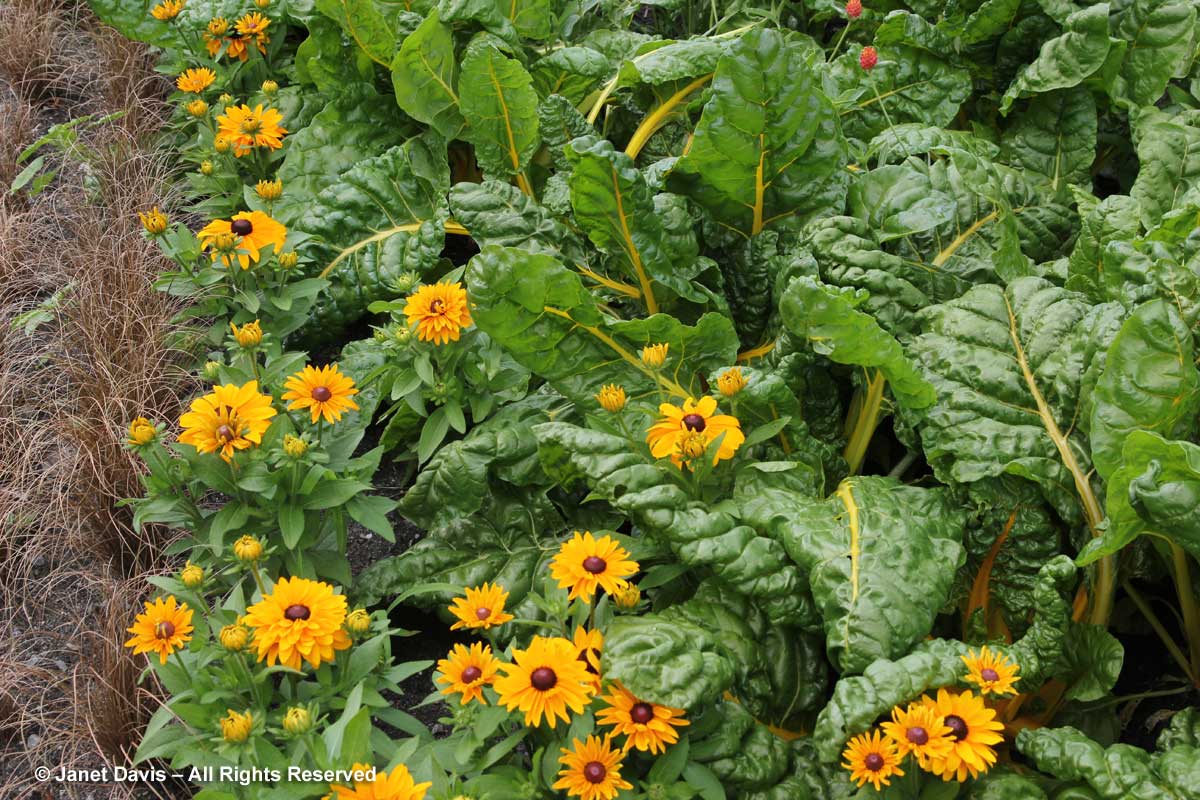
12) An ebullient assortment of gloriosa daisy cultivars mixed with blue cornflowers (Centaurea cyanus) was used in this mini-meadow at Montreal Botanical Garden a few years ago.
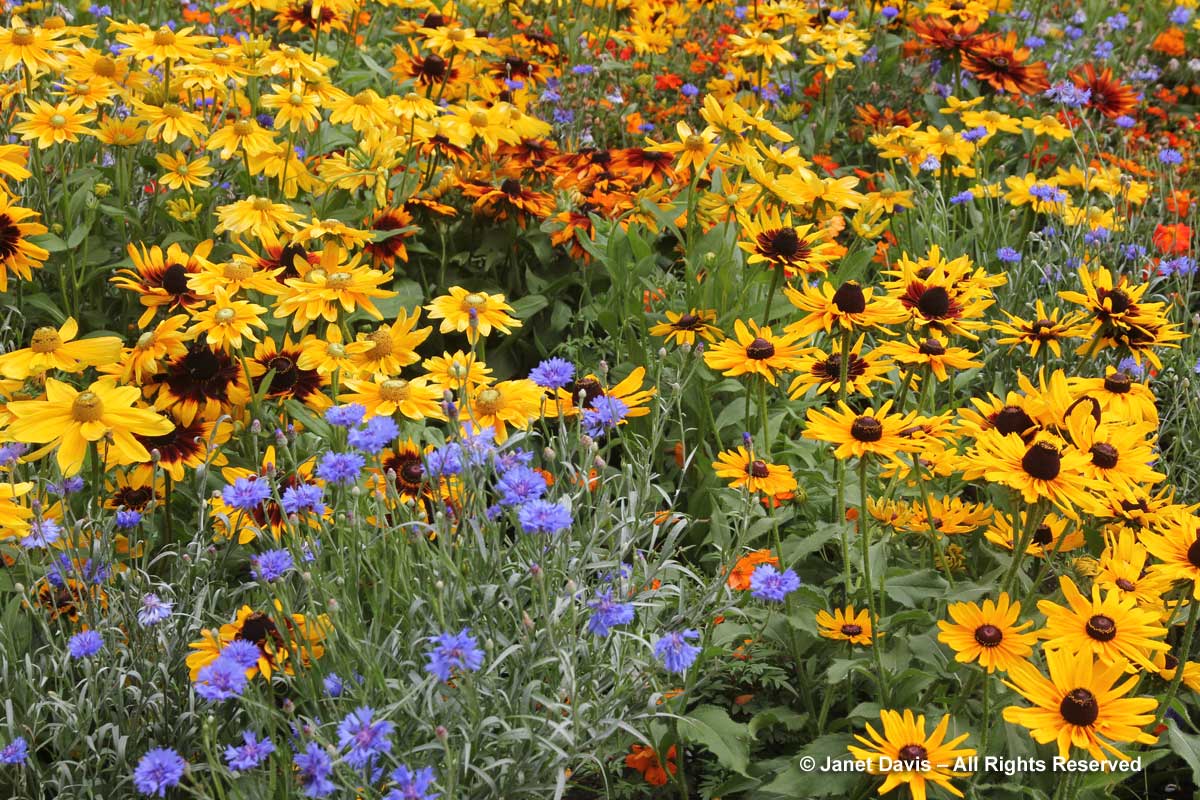
Here’s a closer look at that pairing; the gloriosa daisy cultivar is Rudbeckia hirta ‘Irish Eyes’.
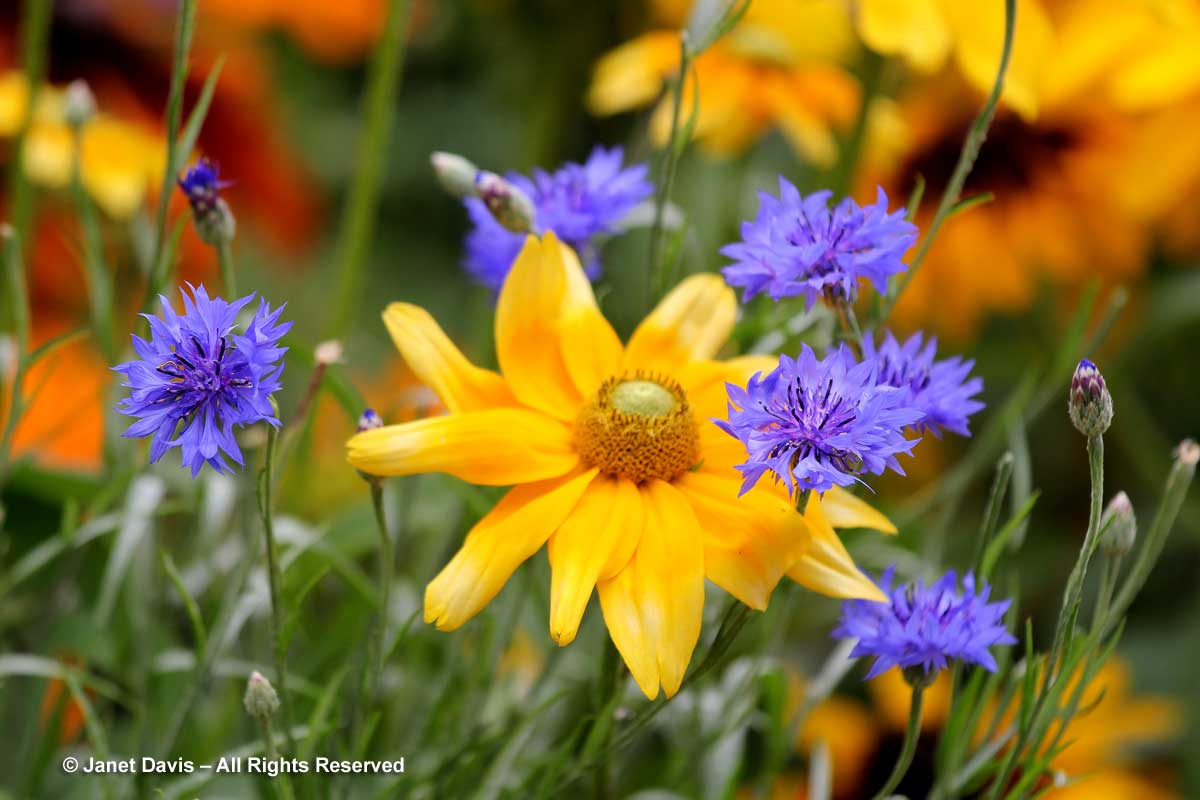
The other blackeyed susan I grow is Rudbeckia fulgida var. sullivantii ‘Goldsturm’. After being named Perennial of the Year in 1999, this bushy plant soared in popularity throughout the world. In the “new American landscape” made popular by Wolfgang Oehme and James Van Sweden, it was deployed alongside ornamental grasses in massive sweeps of gold. It continues to be one of the most popular summer perennials, and spreads very easily (too easily, perhaps, for some).
13) In my city garden, I grow a host of pollinator plants in my front garden, and Rudbeckia ‘Goldsturm’ is the perfect, long-flowering companion to purple coneflower (Echinacea purpurea). Since I enjoy it so much, I suppose it’s not a surprise that the neighbourhood rabbit seems to like the blossoms, too – as I discovered last summer, finding a large clump deflowered.
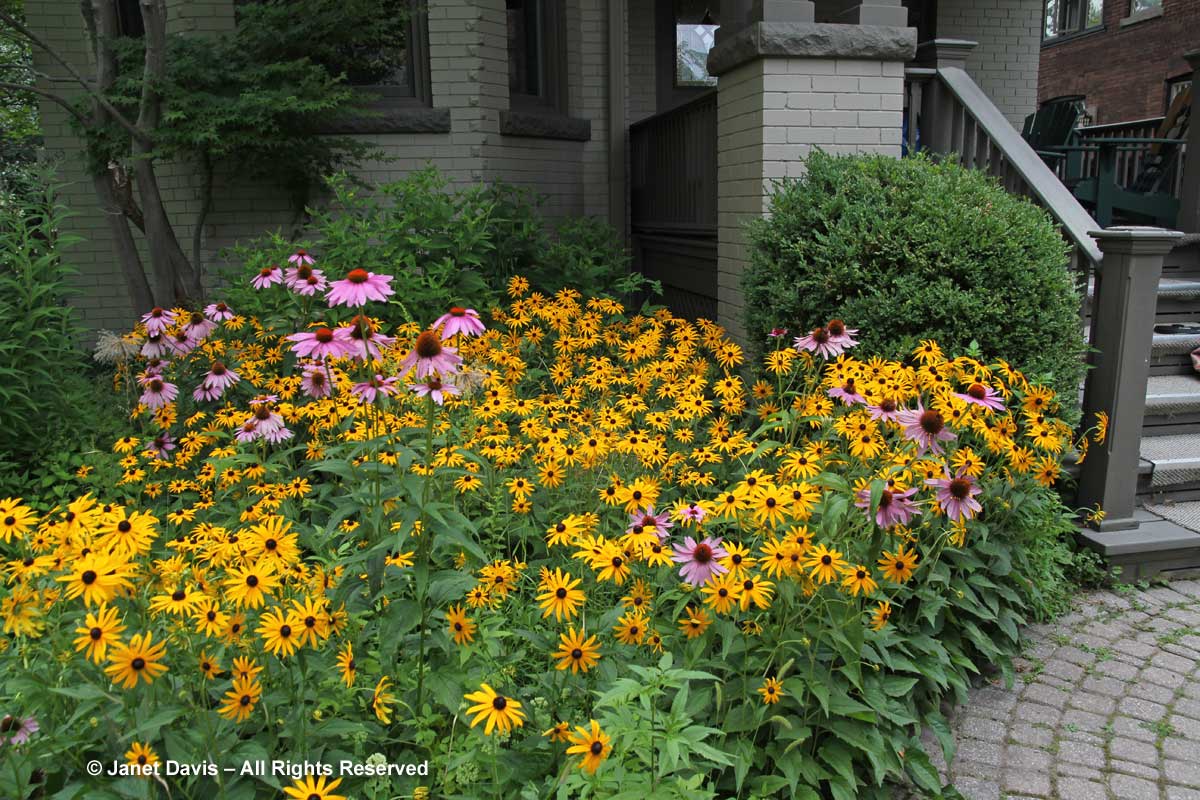
14) My friend Marnie Wright (whose garden I have blogged about previously) uses ‘Goldsturm’ throughout her Bracebridge garden. I especially like it with summer phlox (Phlox paniculata), and…
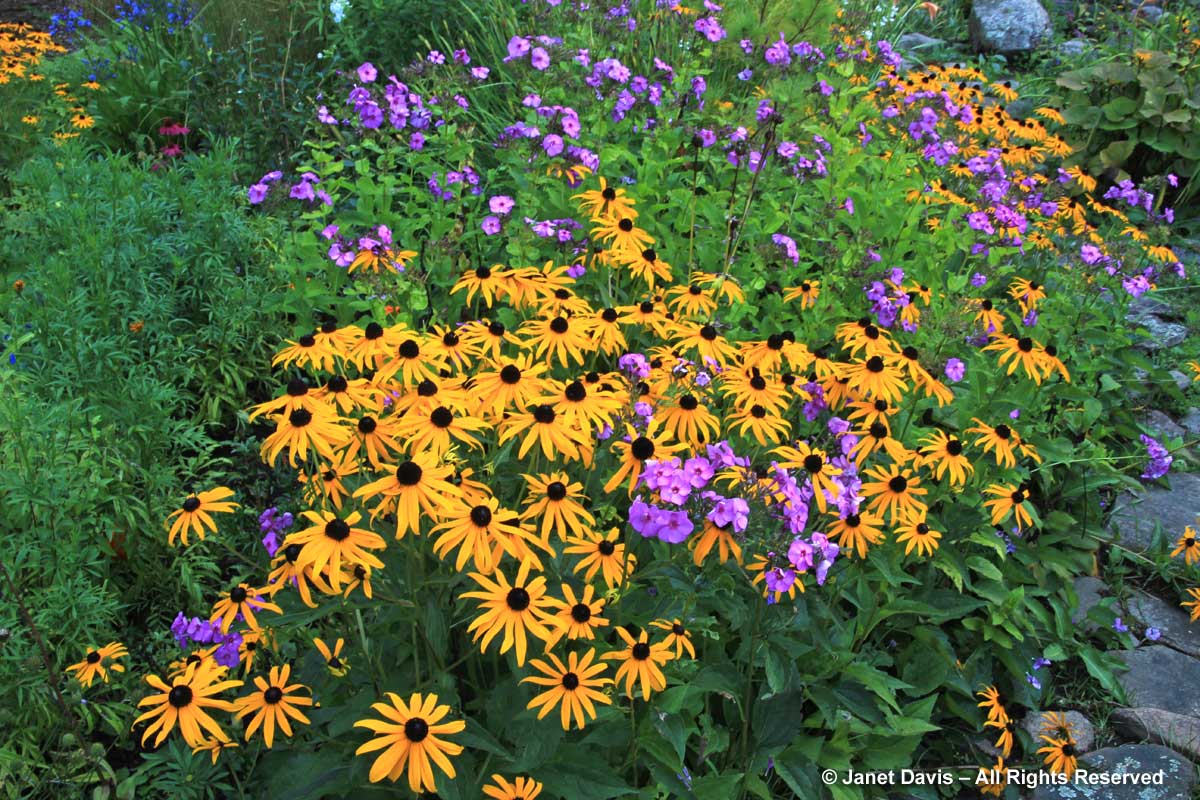
15) ….with agapanthus (Agapanthus africanus), and….
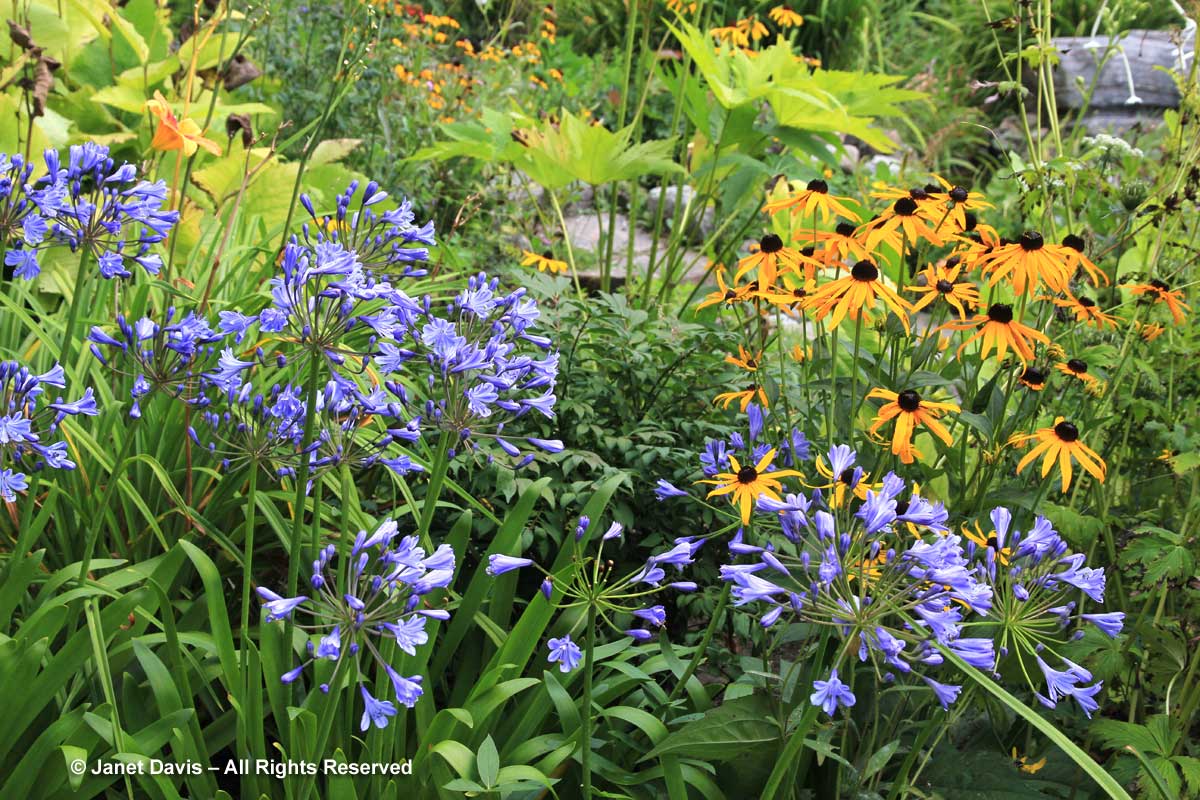
16) ….with Marnie’s gorgeous daylilies (Hemerocallis ‘Jade Star’).
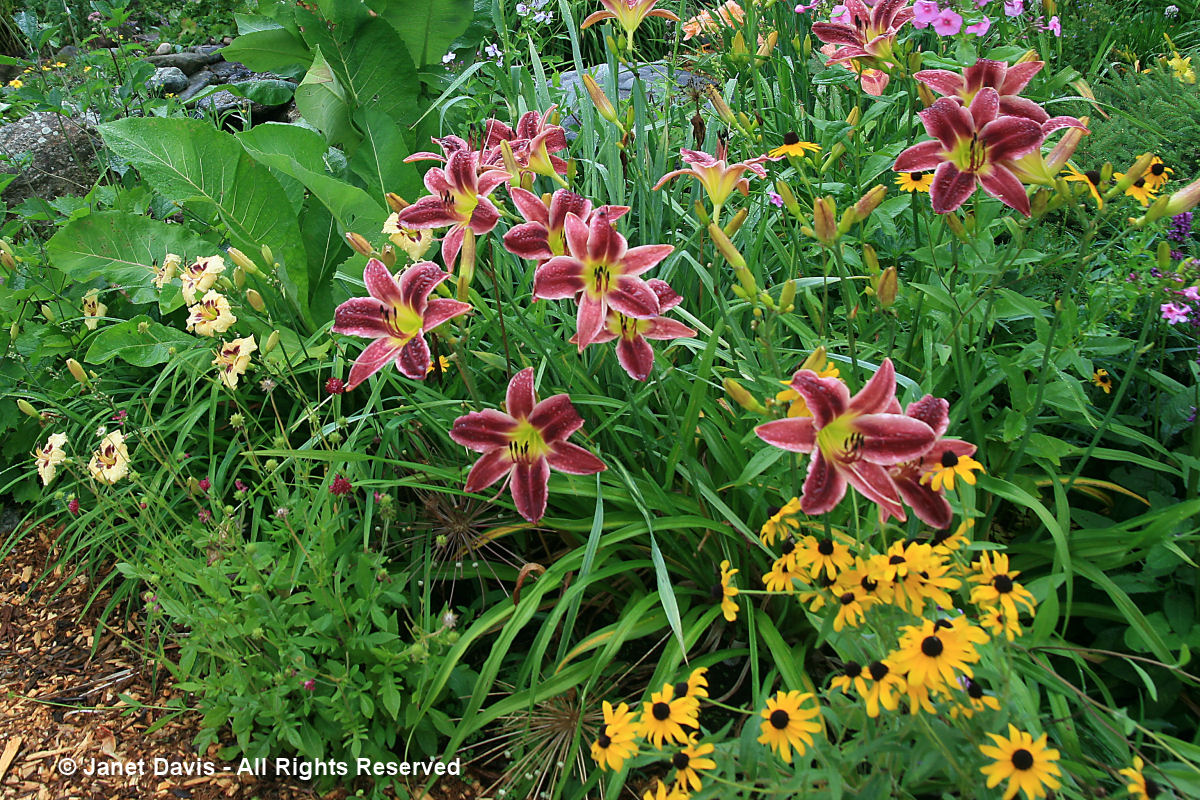
At the Toronto Botanical Garden, Rudbeckia ‘Goldsturm’ is used in a few gardens.
17) Here it is with balloon flower (Platycodon grandiflorus), and ….
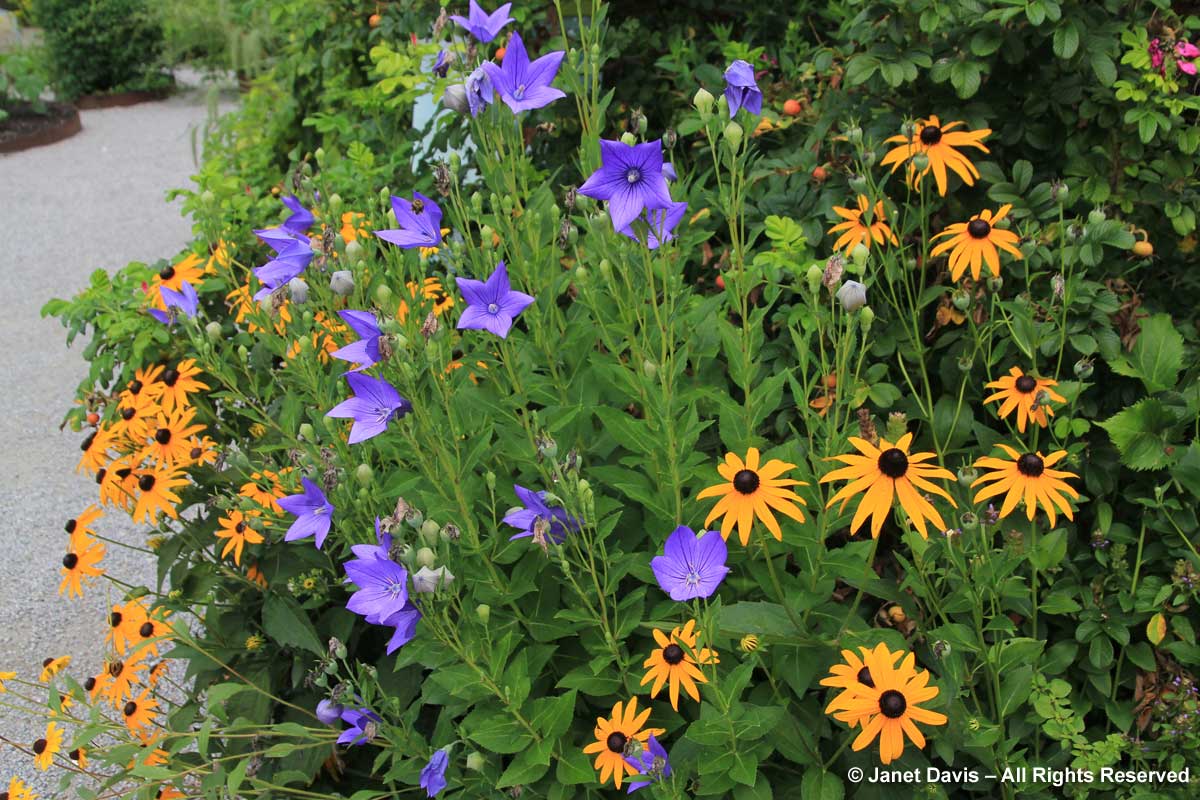
18) …with ‘Diabolo’ ninebark (Physocarpus opulifolius) that has been coppiced to keep it compact, and….
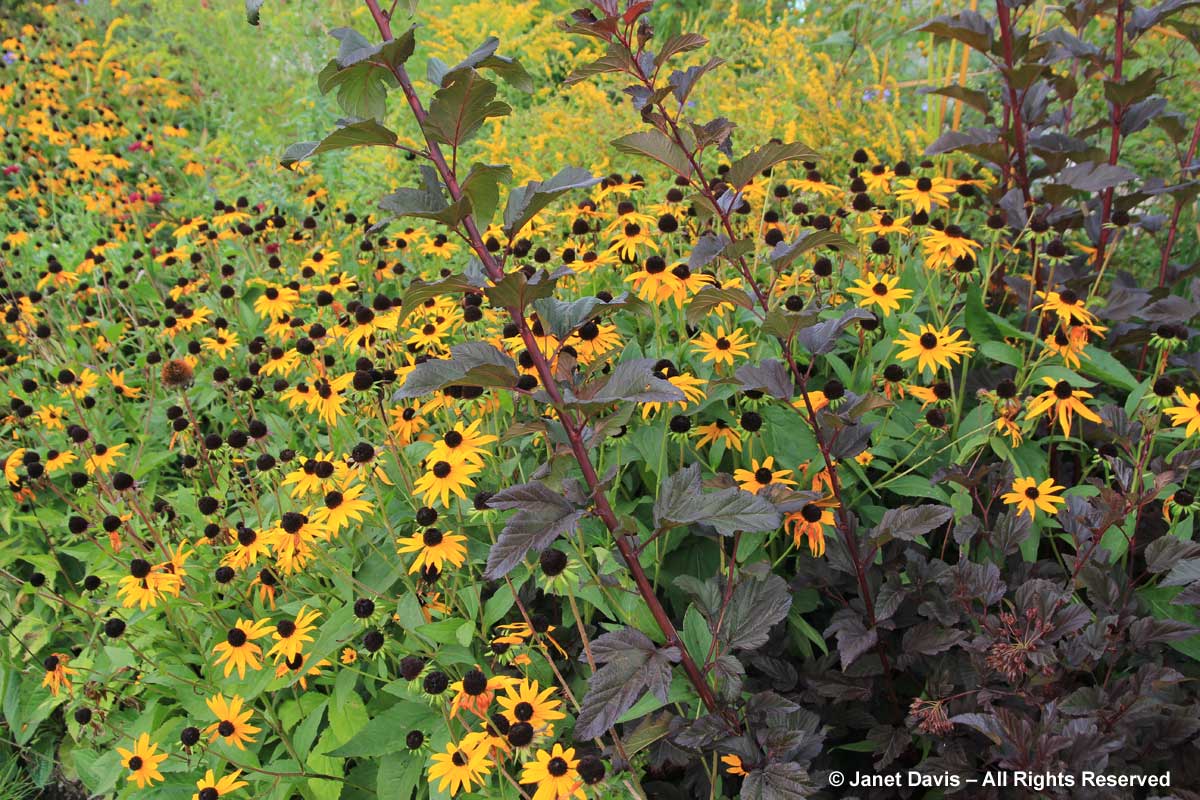
19) .. with the prairie grass little bluestem (Schizachyrium scoparium), and…..
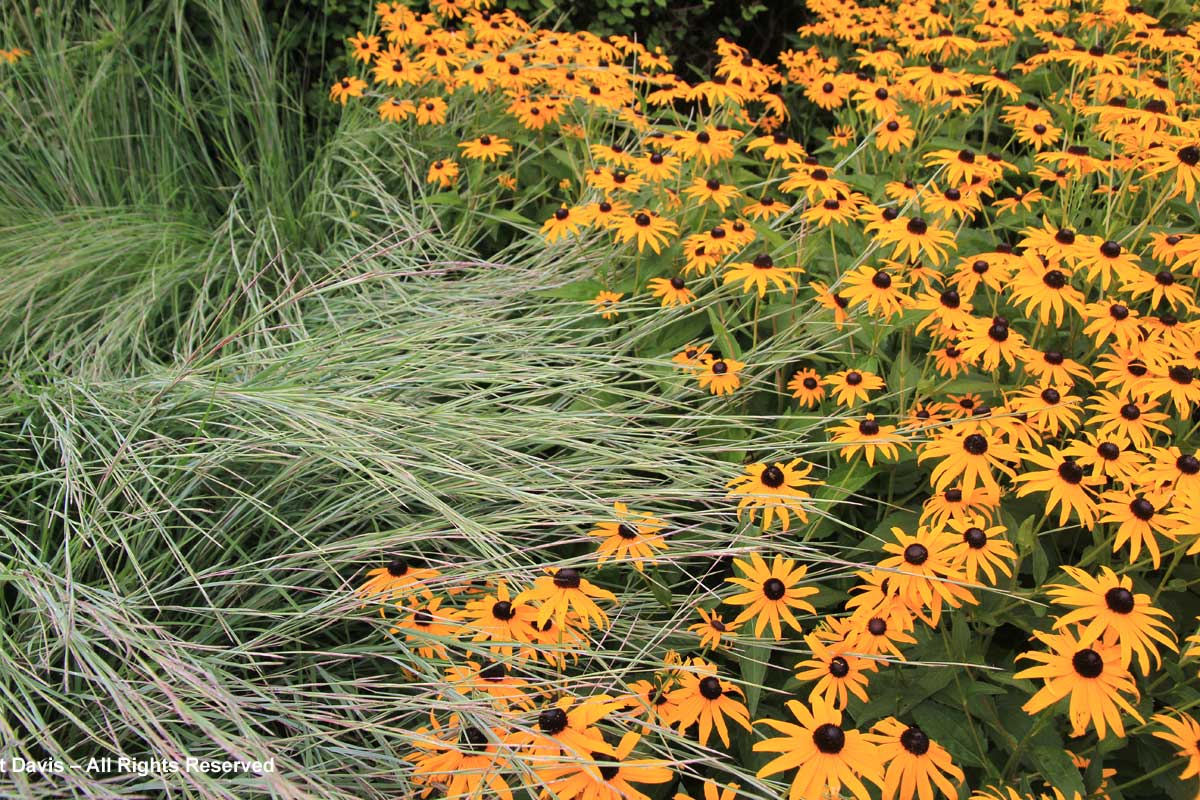
20) …with great blue lobelia (Lobelia sophilitica).
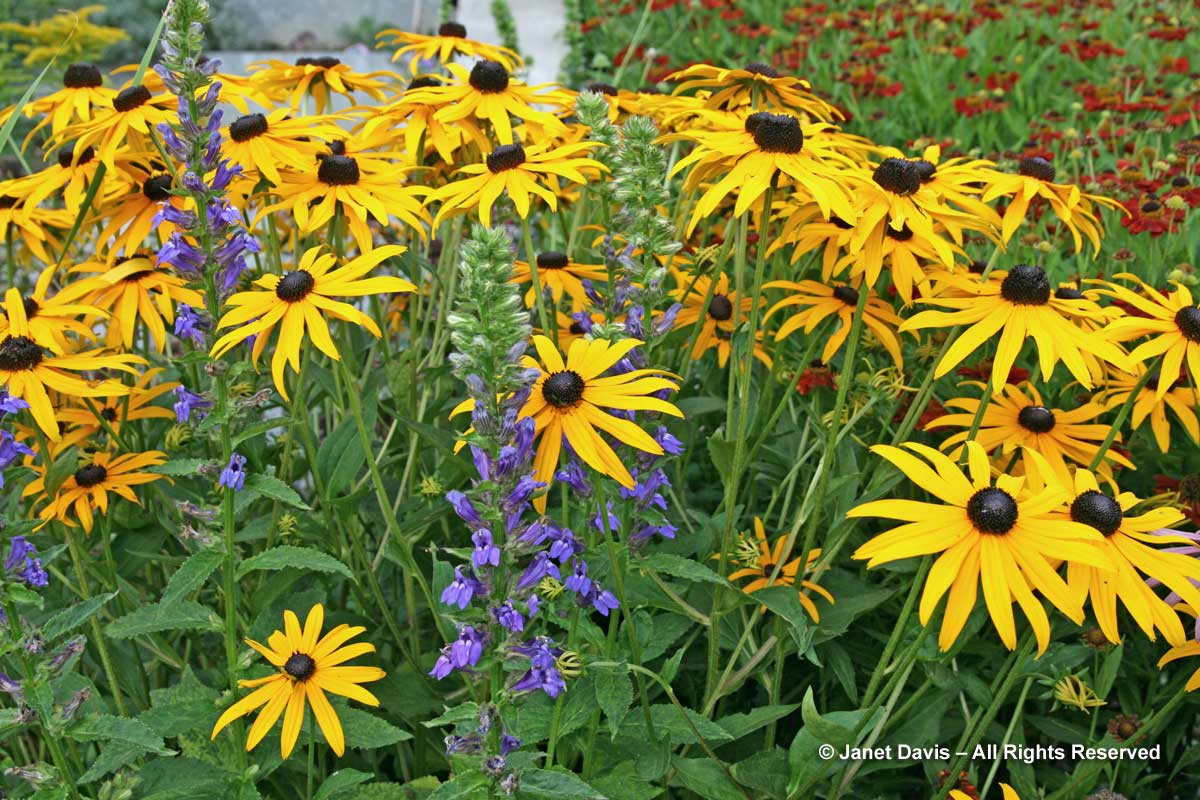
At Toronto’s Spadina House gardens, Rudbeckia ‘Goldsturm’ provides huge colour from mid-to-late summer…..
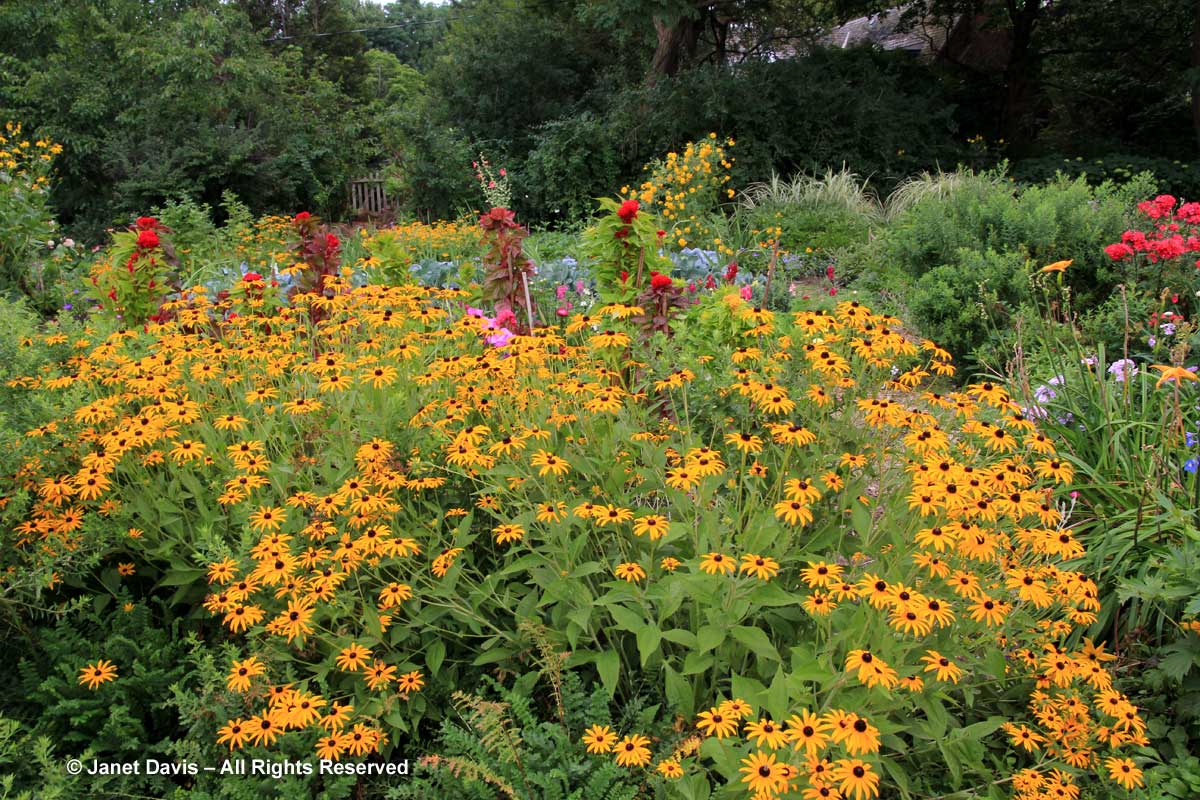
21) …. when it celebrates the beginning of autumn with a brilliant splash of gold from (appropriately) goldenrod (Solidago sp.)
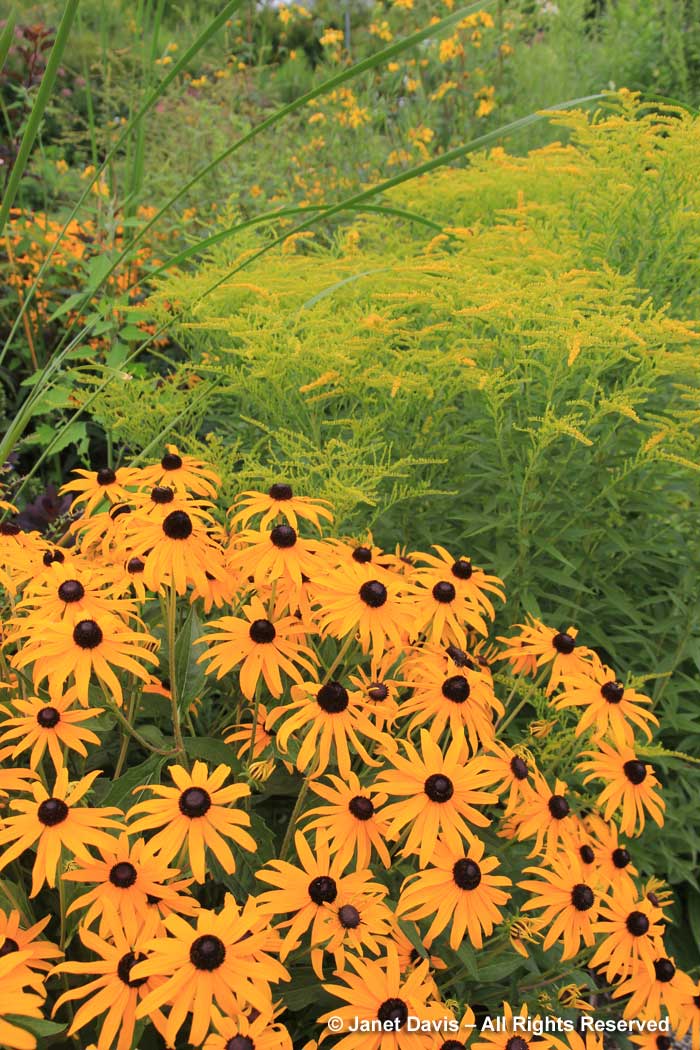
My work as a matchmaker is done. I hope you found a dance partner or two for your own blackeyed susans!
